Post 17- 09.11.2025
Når hunden trenger litt mer plass – å forstå behovet for avstand
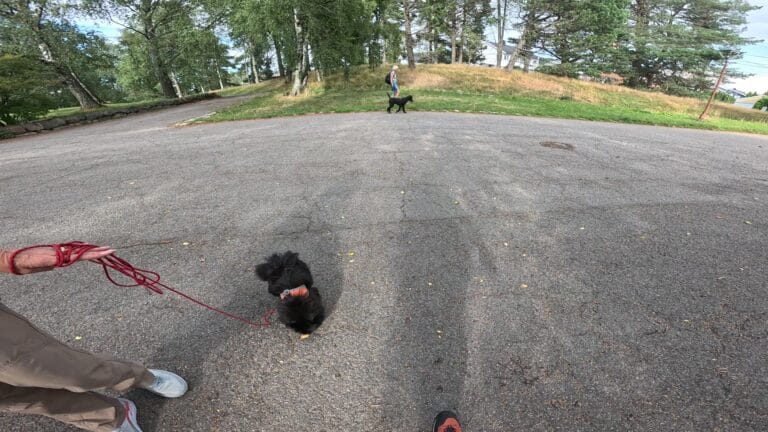
Har du noen ganger følelsen av at dere ikke kommer videre i forbipasseringstreningen, selv om dere øver mye?
Eller at møter med fremmede mennesker, løpende barn eller grupper av folk blir en utfordring når de kommer for nær?
Ofte handler løsningen om noe så enkelt – og likevel så viktig – som avstand.
Avstand er et av de mest verdifulle verktøyene vi har i hundetrening, men det blir dessverre brukt altfor lite og undervurdert.
Akkurat som oss mennesker noen ganger trenger litt rom for å kunne puste og tenke,
trenger også hunden din plass for å kunne lære og gjøre gode erfaringer.
Hva betyr egentlig “plass” for en hund?
Akkurat som oss mennesker har hver hund sin personlige grense – sin comfort zone.
Innenfor denne sonen slipper hunden bare inn dem den stoler på, uten å reagere.
Men når noen den ikke kjenner – enten en person eller en annen hund – plutselig kommer for tett på, vil de fleste hunder reagere.
Det er helt naturlig.
Og det er noe vi som hundeeiere må akseptere, forstå og hjelpe hundene våre med å håndtere.
Hvor mye avstand en hund trenger, varierer enormt.
For én hund kan to meter være nok, mens en annen kanskje trenger 200 meter for å føle seg trygg.
Det kan være vanskelig å vurdere i starten, men med tiden lærer du å lese hunden din bedre – og du vil lettere kunne se når den trenger mer plass, og når den takler litt mindre.
Avstand handler ikke bare om fysisk rom.
Når du hjelper hunden din å skape avstand, viser du at du ser den, forstår følelsene dens og hjelper den å finne roen igjen.
Du forteller hunden:
“Jeg ser deg. Jeg hjelper deg. Du trenger ikke ordne dette alene.”
Dersom hunden ikke får den hjelpen, eller ikke har mulighet til å trekke seg unna, vil den begynne å gi tydelige signaler:
Kroppen blir stiv, bevegelsene saktere, pelsen kan reise seg, og leppene trekkes opp.
Knurring kan komme som en siste advarsel.
Dersom vi overser disse tegnene, kan hunden begynne å bjeffe, kaste seg mot det den reagerer på – eller prøve å flykte fra situasjonen. “Avstand er hundens måte å si:
‘Jeg trenger litt rom for å føle meg trygg.’”

Hvorfor noen hunder trenger mer plass
- Tidlige erfaringer, genetikk og stressnivå
Noen hunder blir født med et høyere grunnleggende stressnivå enn andre.
Dette kan henge sammen med genetikk – for eksempel linjer der avl har hatt fokus på utseende fremfor mental stabilitet.
Valper fra dårlige oppdrett kan derfor være mer følsomme for stress og ha lavere terskel for å reagere på det som skjer rundt dem.
I tillegg spiller tidlige erfaringer en stor rolle.
Valper som ikke har fått rolig og trygg sosial læring i de første ukene,
kan senere i livet trenge mer plass for å føle seg trygg i møte med ukjente hunder, mennesker eller nye miljøer.
Det betyr ikke at de er “vanskelige” – bare at de trenger litt mer tid, støtte og avstand for å finne roen.
- Miljø, læring og livserfaring
Hvordan hunden opplever verden formes av det den lærer – både de gode og de vanskelige opplevelsene.
En hund som har hatt ubehagelige møter med andre hunder, kan raskt forbinde lignende situasjoner med stress.
Selv én dårlig erfaring kan være nok til at hunden får behov for å skape mer avstand i fremtiden.
Alder spiller også en stor rolle.
Unge hunder i hormonelle faser opplever ofte verden mer intenst – lukter, lyder og bevegelser kan virke verveldende.
Det samme gjelder eldre hunder som hører eller ser dårligere; de kan bli mer usikre fordi forutsigbarheten forsvinner.
Derfor er det viktig at vi ikke presser hunden inn i nye situasjoner for raskt,
men lar den få bygge trygghet i sitt eget tempo – og med så mye rom som den trenger for å lykkes.
- Kropp og helse
Noen ganger endrer behovet for avstand seg plutselig.
En hund som tidligere har vært trygg, kan begynne å reagere på nærhet – trekke seg unna, knurre eller virke irritert.
Da bør vi alltid tenke helse først.
Smerter, spenninger eller ubehag i kroppen påvirker atferden direkte.
Når noe gjør vondt, kan selv vennlige møter oppleves som stressende.
Derfor er det viktig å undersøke fysiske årsaker når endringer skjer brått, uten klare forklaringer som
ungdomsfaser eller tidligere dårlige erfaringer.
“Atferd forteller oss alltid noe – og noen ganger sier den: ‘Jeg har vondt.’”

Gi hunden plass og bevegelsesfrihet
Når vi snakker om avstand, handler det ikke bare om hvor langt unna vi holder oss fra andre hunder, men også om hvordan vi lar hunden bevege seg i denne avstanden. En god og praktisk måte å hjelpe hunden på, er å bruke en lengre line – mellom 3 og 4 meter.
En slik line gir hunden rom til å puste, bevege seg naturlig og ta egne valg. Når hunden har lært å håndtere dette, vil den også begynne å søke avstand selv – den lærer rett og slett å regulere seg på en trygg måte.
Det er viktig å huske at vi aldri skal trekke i linen når hunden blir usikker eller reagerer. Når vi strammer linen, legger vi bare mer press og spenning på hunden – og da vil den som oftest reagere enda sterkere.
I stedet kan du bruke det vi kaller “curving” – altså å gå i en myk bue når dere nærmer dere en annen hund eller situasjon som kan være vanskelig. Denne bevegelsen er mye mer naturlig for hunder, og signaliserer trygghet og ro.
Målet er ikke at hunden aldri skal reagere, men at den skal få hjelp til å lære hvordan den kan regulere seg og føle seg trygg i møte med andre. Når vi gir hunden plass, tid og trygghet – gir vi den også muligheten til å lykkes.
Les hunden din – små signaler betyr mye
Hunder kommuniserer hele tiden med kroppen, men mange av signalene deres er små og lette å overse. En liten slikk på snuten, et blikk som vender bort, eller et langsomt steg bakover – alt dette er måter hunden prøver å si:
«Jeg trenger litt mer plass.»
Når vi lærer oss å se disse signalene tidlig, kan vi handle før hunden blir stresset, og dermed unngå at den må heve stemmen – bjeffe, utagere eller trekke seg helt unna.
Det er vår jobb å svare på disse signalene, ikke overse dem.
Ved å respektere det hunden prøver å si, bygger vi tillit. Hunden opplever at du lytter – og det gjør den tryggere, roligere og mer mottakelig for læring.
Hjelp hunden med gode opplevelser
Når vi trener på passeringer, miljøtrening eller sosiale situasjoner, er det viktig å bygge erfaringer som gir trygghet – ikke mer stress.
Det betyr at vi må tilpasse vanskelighetsgraden til hunden.
For en hund som synes det er vanskelig å møte andre, er det mye bedre å starte med en trygg avstand og suksess enn å feile på for kort avstand.
Gode opplevelser betyr ikke at alt må være perfekt – det handler om at hunden opplever mestring. Kanskje klarte den å se på en annen hund uten å bjeffe? Eller å gå rolig forbi en syklist?
Hver slik opplevelse styrker hundens selvtillit. Over tid lærer den: «Jeg klarer dette.»
Og det er akkurat slik trygghet bygges.
Tålmodighet og forutsigbarhet
Vi må huske at trygghet tar tid. Spesielt hos hunder som har dårlige erfaringer, kommer fra stressede miljøer eller har hatt lite sosial trening i valpetiden, trenger hjernen tid til å omstille seg.
For disse hundene er forutsigbarhet og ro den beste medisinen. Når vi repeterer trygge rutiner, bruker rolige bevegelser og snakker med lav stemme, viser vi at verden ikke er farlig – og det gir rom for læring.
Tålmodighet betyr ikke å ikke trene – det betyr å trene på hundens premisser. Noen dager går det fort framover, andre ganger må man ta et steg tilbake.
Men med tid, trygghet og riktig avstand vil du se forandringen: hunden din begynner å stole på seg selv – og på deg.
Post 16- 17.10.2025
Hvordan smerte kan forveksles med atferdsproblemer

Mange hundeeiere kommer til meg fordi hunden “plutselig har endret seg”.
Den virker stresset, bjeffer mer, vil ikke være alene, eller reagerer uvanlig sterkt i situasjoner som tidligere gikk fint.
Ofte tenker vi at det handler om oppdragelse eller trening.
Men i mange tilfeller ligger årsaken et helt annet sted – nemlig i kroppen.
Når hundens kropp snakker – men vi ikke forstår
Hunder er mestre i å tilpasse seg.
De klager sjelden, selv når de har vondt, og mange eiere merker derfor ikke smerte før hunden begynner å “oppføre seg annerledes”.
Noen tegn kan være:
- at hunden trekker seg unna berøring
- nøler før den hopper inn i bilen
- begynner å unngå trapper
- plutselig reagerer på andre hunder eller mennesker
- virker urolig, får vansker med å slappe av eller sove
For oss ser det kanskje ut som et atferdsproblem.
Men for hunden er det en måte å si: «Noe gjør vondt».

Når smerte blir til stress, og stress blir til atferd
Kroppen og atferden henger tett sammen. En hund som har vondt, får lettere et høyt stressnivå.
Det påvirker søvn, appetitt, sosial oppførsel og evnen til å lære.
Når smerten blir en del av hverdagen, begynner mange hunder å reagere på små ting — fordi kroppen allerede er i beredskap.
Vi mennesker kan ofte misforstå dette som “stahet”, “usikkerhet” eller “dominans”.
Men egentlig prøver hunden å beskytte seg.
Det er en naturlig respons – ikke ulydighet.
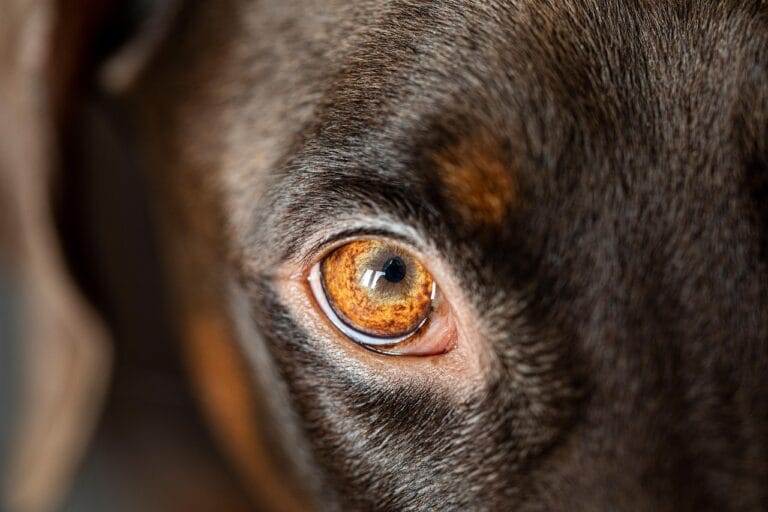
En helhetlig tilnærming
I Hundeskole Pelsnese møter jeg ofte hunder som allerede har vært gjennom mange treningsopplegg – uten at problemene har forsvunnet.
Først når vi begynner å se hele hunden, skjer endringen.
Jeg jobber etter en PDTE-inspirert tilnærming, der kommunikasjon, trygghet og forståelse står i sentrum.
Når jeg mistenker smerte, samarbeider jeg gjerne med veterinær, fysioterapeut eller kiropraktor.
Det å få en hund undersøkt grundig kan være den viktigste treningen av alle.
Et lite eksempel fra praksis
En unghund jeg møtte nylig ble beskrevet som “utagerende” på tur.
Han trakk voldsomt i båndet, bjeffet mot andre hunder og hadde begynt å unngå kontakt med eier.
Etter en veterinærkontroll viste det seg at han hadde smerter i nakke og rygg – sannsynligvis etter et fall.
Etter behandling, rolig tilvenning og enkle kontaktøvelser ble han en helt annen hund.
Atferden forsvant – ikke fordi vi trente den bort, men fordi kroppen fikk ro.
Til deg som eier
Hvis du merker at hunden din har endret seg, start alltid med å spørre:
“Hvorfor? " og "Kan det være smerte?”
Selv små spenninger i kroppen kan gjøre en stor forskjell for hvordan hunden opplever verden.
Når vi lytter til kroppen, får vi ofte nøkkelen til atferden.
Noen ganger er det ikke mer som skal til enn å gi hunden hvile, justere aktivitetene eller få hjelp av en fagperson.
Når hunden får det bedre fysisk, faller ofte “problematferden” stille bort.
Når vi ser hunden som helhet
Å forstå hunden handler ikke bare om å lære den nye ting,
men om å lytte til signalene den allerede prøver å gi.
For meg er dette kjernen i alt arbeid jeg gjør:
Å møte hund og menneske med tålmodighet, nysgjerrighet og omsorg.
Når vi ser hele bildet, kan vi hjelpe hunden tilbake til balanse –
og relasjonen mellom dere blir sterkere enn noen gang.
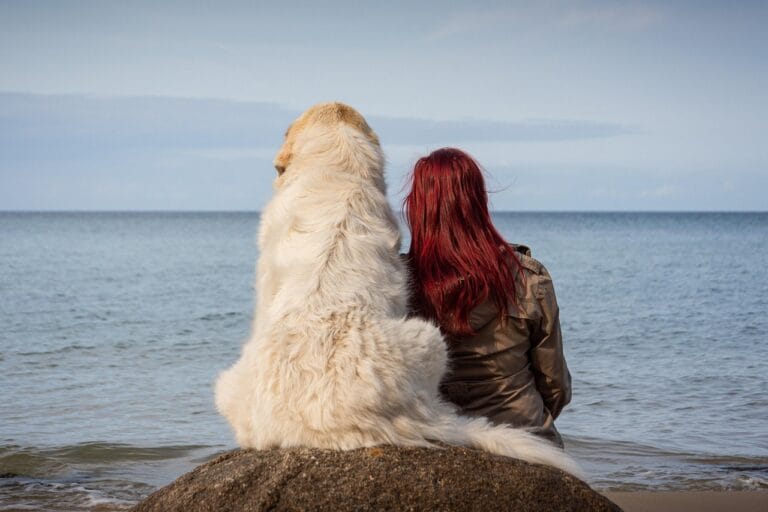
Post 15- 02.10.2025
Hvorfor miljøtrening er viktig for hunden din
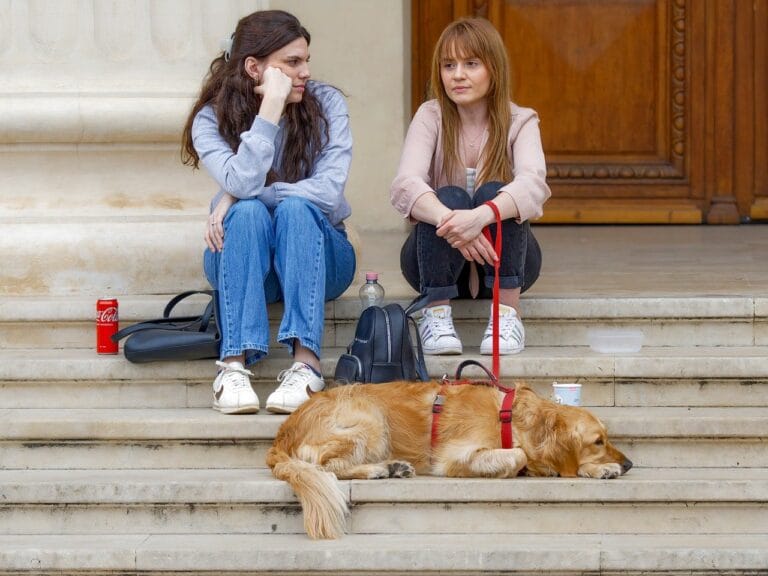
Miljøtrening handler om å ta hunden med i ulike omgivelser, slik at den gradvis blir tryggere og lærer å mestre nye situasjoner. Målet er at hunden skal oppleve disse møtene som positive – at den føler seg sikker, får gode erfaringer og kan bygge selvtillit.
Hundene våre møter nye steder, mennesker, lyder og andre hunder nesten daglig. Selv om vi ikke alltid trenger å ta hunden «overalt», er det verdifullt å gi den gode opplevelser innimellom. Med riktig oppbygging kan vi styrke hundens mestringsfølelse – og dermed legge et fundament for en mer robust og harmonisk hund i hverdagen.
Hva skjer uten miljøtrening?
Når hunder ikke får gode erfaringer med ulike miljøer, kan de utvikle usikkerhet eller stress. Vanlige tegn er bjeffing, utagering, uro eller at hunden trekker seg unna. Mange eiere opplever at hunden «blir vanskelig» uten å forstå at den rett og slett ikke har fått nok trygge erfaringer å bygge på.
Settes hunden gjentatte ganger i situasjoner den ikke kan takle, får den heller ikke mestringsfølelse – bare negative erfaringer. Dette går ut over både livskvalitet og relasjonen til eier.
Fordelene med god miljøtrening
- Økt trygghet: Hunden lærer steg for steg at nye omgivelser ikke er farlige.
- Bedre samarbeid: Når eier støtter hunden riktig, styrkes båndet mellom dere.
- Bedre regulering: Hunden lærer å roe seg ned selv i krevende situasjoner.
- Mer ro i hverdagen: En trygg hund lever et mer avslappet liv, med mindre stress.
Viktige prinsipper i miljøtrening
- Start alltid på hundens nivå – korte økter, med god avstand.
- La hunden få tid til å observere og bearbeide.
- Belønn rolig atferd og mestring i riktig øyeblikk.
- Unngå å overeksponere – avslutt heller tidlig når du kjenner at det går bra.
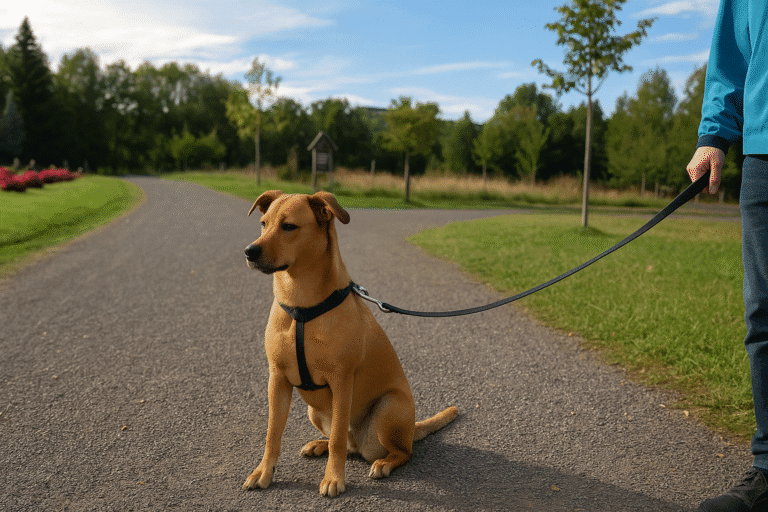
Slik jobber vi på kurset
På miljø- og sosialiseringskurset jobber vi i små grupper slik at hver hund får trygghet og avstand. Hver hund reagerer ulikt, og derfor tilpasser jeg opplegget individuelt.
Vi trener på hverdagslige situasjoner: passeringer, møte folk, og opplevelser i ulike miljøer. Du får enkle, praktiske verktøy som er lette å trene videre på i hverdagen.
Avslutning
Miljøtrening er en investering i hundens trygghet og trivsel. Selv om du ikke ønsker å ta hunden med overalt, er det godt å ha en hund som kan føle seg trygg og mestre nye situasjoner. En trygg hund betyr en mer harmonisk hverdag for både deg og hunden.
 Neste Miljø- & sosialiseringskurs starter 10. oktober.
Neste Miljø- & sosialiseringskurs starter 10. oktober.
Meld deg på her:
Post 14- 28.08.2025
Slik starter du hundehøsten uten stress og frustrasjon
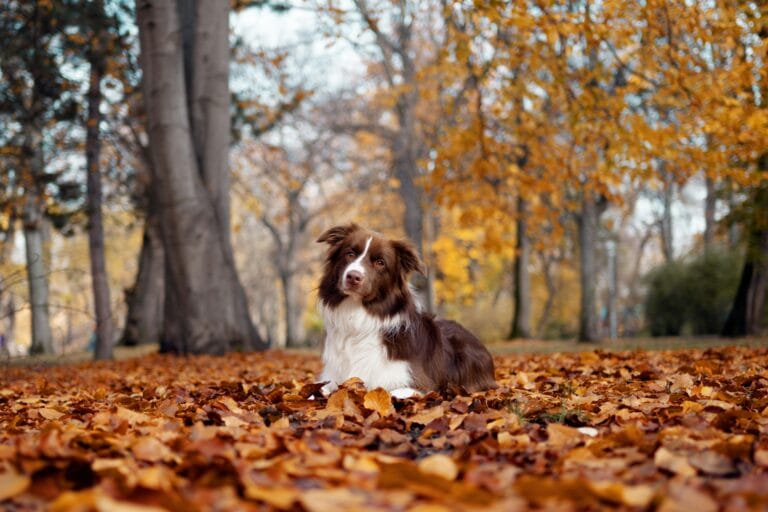
August går mot slutten. Kveldene blir mørkere, luften kjøligere og de første bladene på trærne skifter farge. Sommeren har vært en fin tid for mange – mindre rutiner, mer frihet og tid sammen med hunden.
Men høsten betyr også at hverdagen kommer tilbake. Vi må holde på rutiner og avtaler – og hunden merker endringen like godt som oss. Overgangen fra ferie til hverdag kan være uvant, og noen ganger også stressende for hunden.
Her er noen tips til hvordan du og hunden din kan få en rolig og god start på høsten:
1. Rutiner
Selv om faste rutiner kan føles krevende for oss, gir de hunden trygghet. Regelmessige turer eller faste fôringsrutiner gjør at hunden vet hva den kan forvente. Og husk: har du mindre tid enn i ferien, er det helt normalt. Kvalitet er viktigere enn kvantitet. En kort, rolig tur med tid til å snuse gir mer enn en stressende times marsj.
2. Mental aktivisering
Regnfulle dager og kortere turer? Da kan hunden få hjernetrim inne. Bruk et håndkle med godbiter rullet inn, koppespill, tomme doruller eller en snusematte. Variasjon er viktig – ellers blir det bare «snack-spising».

3. Sosial trening
Høsten er en perfekt tid for kurs: valpekurs, unghundkurs, forbipasseringskurs eller søkskurs som kantarell- eller trøffelsøk. Det gir nye inntrykk, styrker samarbeidet og bygger båndet mellom deg og hunden.
4. Helse og sikkerhet
Mørkere kvelder betyr synlighet: refleksvest eller lys gjør turene tryggere – både for biler, syklister og andre hundeeiere. Etter våte turer: tørk hunden godt, så unngår du forkjølelse eller hudproblemer. Et håndkle eller et teppe i bilen fungerer fint som «badekåpe» mens hunden hviler.
Oppsummering
Høsten kan være en nydelig tid med hunden – hvis vi planlegger litt og tar det med ro. Gode rutiner, mental stimulering, kurs og synlighet gjør hundehøsten både trygg og givende.
 Vil du starte hundehøsten med inspirasjon? Sjekk kursene våre eller meld deg på nyhetsbrevet for flere tips!
Vil du starte hundehøsten med inspirasjon? Sjekk kursene våre eller meld deg på nyhetsbrevet for flere tips!
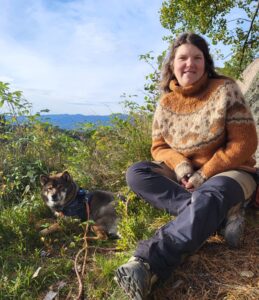
Post 13- 07.08.2025
🐾 5 grunner til at nesearbeid fremmer alle hunder
Har du noen gang lurt på hvorfor vi legger så stor vekt på nesearbeid i kursene våre? Nesearbeid handler ikke bare om å søke etter godbiter eller skjulte gjenstander – det er en kraftfull og allsidig aktivitet som gir hunden mye mer enn bare fysisk mosjon. Her får du 5 gode grunner til at nesearbeid passer for absolutt alle hunder – uansett alder, rase eller treningsnivå.
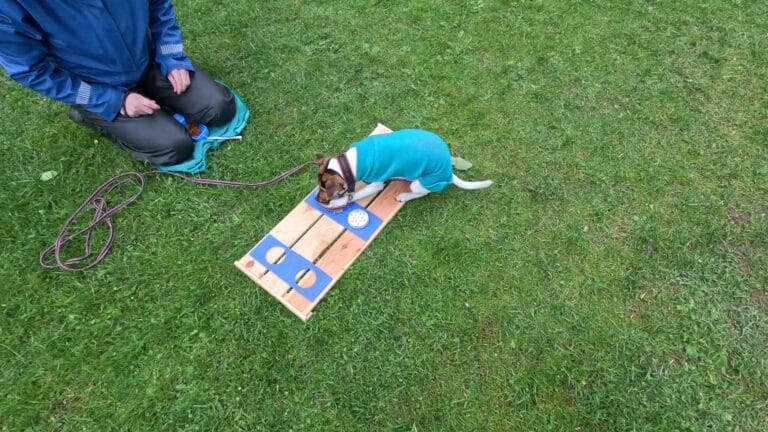
1. Styrker selvtilliten -
Når hunden lykkes med å analysere og finne en bestemt lukt, opplever den mestring og glede. Å løse oppgaver med nesen gir en positiv følelse, og dette bidrar til å styrke hundens selvtillit – spesielt hos hunder som er usikre eller forsiktige i hverdagen.
2. Hjelper usikre, engstelige og atferdsutfordrede hunder -
Nesearbeid har vist seg å være svært nyttig for hunder med ulike utfordringer – enten det handler om usikkerhet, frykt, aggresjon eller annen problematferd. Når hunden får styrket selvtillit gjennom målrettet arbeid med nesen (se punkt 1), ser vi ofte at atferden endrer seg i positiv retning.
 Viktig: Innføring i nesearbeid bør skje rolig og i riktig tempo – gjerne i samarbeid med en erfaren hundetrener. Går man for fort fram, kan hunden bli frustrert eller miste motivasjonen fordi den ikke lykkes. Da kan nesearbeid bli noe negativt i stedet. Med en god plan, tålmodighet og trygg veiledning kan nesearbeid være et verdifullt verktøy for atferdsendring.
Viktig: Innføring i nesearbeid bør skje rolig og i riktig tempo – gjerne i samarbeid med en erfaren hundetrener. Går man for fort fram, kan hunden bli frustrert eller miste motivasjonen fordi den ikke lykkes. Da kan nesearbeid bli noe negativt i stedet. Med en god plan, tålmodighet og trygg veiledning kan nesearbeid være et verdifullt verktøy for atferdsendring.
3. Gir mental aktivisering -
Nesearbeid er en fantastisk måte å aktivisere hunden mentalt på. Det krever fokus, konsentrasjon og evne til å skille mellom ulike lukter. Faktisk kan 15 minutter med nesearbeid tilsvare en 2 timers tur – så krevende er det mentalt. Hunden må ta valg, følge og skille mellom spor, og tåle litt frustrasjon underveis. Dette gjør hunden både trøtt og tørst – så husk pauser, korte økter og tilgang til friskt vann. Med nesearbeid holder du hundens hode i form, og du gir den noe meningsfullt å gjøre.

4. Styrker båndet mellom hund og eier -
I nesearbeid er det hunden som har «hovedrollen» – den har jo den beste nesa! Men vi som eiere er like viktige. Vi støtter hunden når den står fast, gir tydelig tilbakemelding når den gjør riktig, og jobber sammen med den for å løse oppgavene. Denne samarbeidsformen bygger tillit – og kan føre til et sterkt og nært bånd mellom deg og hunden din.
5. Hunder er født til å snuse -
La oss se på noen fakta:
 En hund har ca. 100–300 millioner luktreseptorer – vi mennesker har bare ca. 5 millioner.
En hund har ca. 100–300 millioner luktreseptorer – vi mennesker har bare ca. 5 millioner.
 Lukteepitelet hos hunden er 30–150 cm², og luktehjernen er opptil 40 ganger større enn vår!
Lukteepitelet hos hunden er 30–150 cm², og luktehjernen er opptil 40 ganger større enn vår!
Hunder kan skille ut og filtrere enkeltmolekyler i et hav av lukter – det er imponerende. Luktesansen er rett og slett hundens viktigste sans.
 Å bruke nesen er derfor ikke bare naturlig – det er essensielt. Med nesearbeid gir vi hunden en mulighet til å bruke evnene sine på en sunn og givende måte.
Å bruke nesen er derfor ikke bare naturlig – det er essensielt. Med nesearbeid gir vi hunden en mulighet til å bruke evnene sine på en sunn og givende måte.
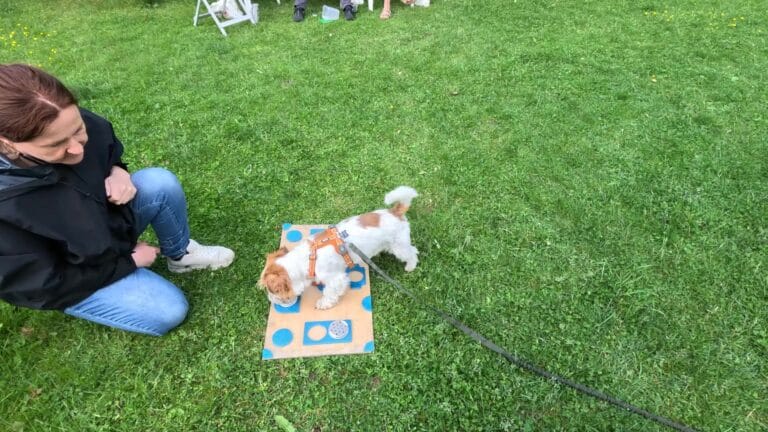
Post 12- 28.02.2024
Do our emotions affect our dogs?

Our dogs are masters of observation. They observe their surroundings and us. Because we live so closely together, our dogs have the opportunity to watch us very closely every day. They know our different moods and our body language. Through this observation, our dogs can tell what mood we are in.
If our dogs can read us so well, are they influenced by our emotions or even infected by it? We will address this question in this post. The information I will share with you is from research reports that I will link to and my own experiences as a dog trainer and dog owner.
What are emotions?

Emotions express feelings such as Love, happiness, sadness, or anger. Emotions are not just feelings, but also a physical reaction and thought process that arise from them.
Do dogs have emotions?

Although dogs were denied any emotions in the past, thanks to research and common sense, we have finally realized that dogs also feel emotions. Therefore, it is also essential for us to observe our dogs and understand what feelings they are currently experiencing. This allows us to help our dogs in difficult situations.
We now know what emotions are and that our dogs also feel them. Can our dogs perceive our feelings, react to them, or even take over them by observing them?
Perceiving feelings:
As a dog trainer, I have some customers who need help with recall. I often hear that even though you have followed every step for a successful recall, your dog won't return. After this statement, I usually ask two questions: How do you move your body, and what does your voice sound like when you call?
Some then say that they turn or move away from the dog, and because most of them are annoyed because the dog doesn't want to come, the voice usually gets louder and louder. In these cases, I always try to hold a mirror up to my clients politely.
Would you come to me if I turned away from you, showed disinterest, and shouted loudly and angrily? Most people understand why the dog doesn't come back and why there are problems with the callback.
Dogs perceive precisely what we feel and how we behave, and just like us, they don't like to be around people in a bad mood and shout.

Respond to emotions
We'll stick with the example of the recall problems.
You may have been in this situation or observed others doing it. What does the dog do when the owner calls and gets angrier and angrier? You can often see him slowing down, repeatedly looking away from the owner, sniffing the grass or other objects, licking his mouth, yawning, or even lying down. What does that mean? Does the dog want to annoy his owner, like I hear from time to time? Dogs never intend to annoy their humans, and every action has a reason. Here, the dog wants to appease his human. He picks up on the emotions and reacts to them with his body language also called calming signals.
He wants to defuse the situation and calm his owner.

Can our feelings be passed on to our dogs?
Here's a little story from myself:
When Akito was about six months old, we had an experience where I became so aware of all these emotional questions that I've been paying close attention to my feelings ever since. That day, I wasn't in a good mental state; I had just a bad day. Akito and I went outside for a walk, where I continued to sulk. As the walk progressed, Akito became slower and slower, sniffed objects for longer, occasionally stopping to look away from me and licking his snout more often. But in my state of mind, I obviously couldn't read his reactions; I became a little grumpier because we weren't making much progress, and I just wanted to go home. Ultimately, he just sat down and didn't want to go any further (and Shibas are really good at that). I was in a bad mood and annoyed and wanted to go home.
I started to scold, and when I tried to approach Akito, he began to scold me. And precisely at that moment, I realized that my emotions had infected him and that this behavior was my fault. He tried several times to calm me down politely, but I didn't notice this, so we got to the moment where we both scolded. Afterward, I just sat down and tried to calm myself down, and after a few minutes, when I slowly started to feel better again, Akito came up to me and sat down next to me. After another 10 minutes, we were both in a much better mood and could continue our walk.
Another example:
A customer told me that his dog behaves strangely when they are together in the forest; he looks pretty stressed, pulls on the leash a lot, hardly sniffs, and doesn't calm down. He explained a little more, and I asked him how he likes walking in the forest. He replied that he didn't like the woods, that being in them was very stressful, and that he couldn't enjoy them. Here, too, the dog reacted to the emotions and then took over.
Dogs perceive our feelings; they try to respond to them, and if we can't read this, our dogs will experience the same emotions as us. Emotions are normal; sometimes, feeling angry, impatient, or frustrated is natural. But remember that this can impact your dog and that he may react differently than usual. Dogs that are more anxious by nature or experience (adopted dogs) or have a higher stress level are particularly affected by such emotions. We must become aware of this to avoid putting our dogs in unnecessary situations they cannot handle.

Here I link some interesting research reports on this topic.
Dogs functionally respond to and use emotional information from human expressions
Investigating emotional contagion in dogs to emotional sounds of humans and conspecifics
Dogs recognize dog and human emotions
Long-term stress in dogs is related to the human–dog relationship and personality traits
Dogs can infer implicit information from human emotional expressions
Post 11- 09.01.2024
Mental activity
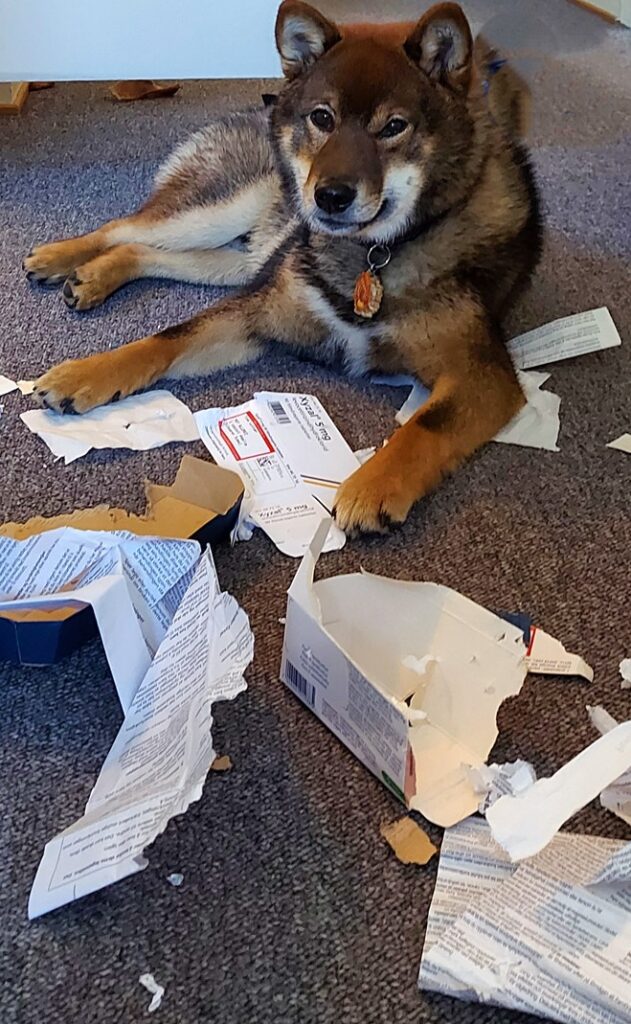
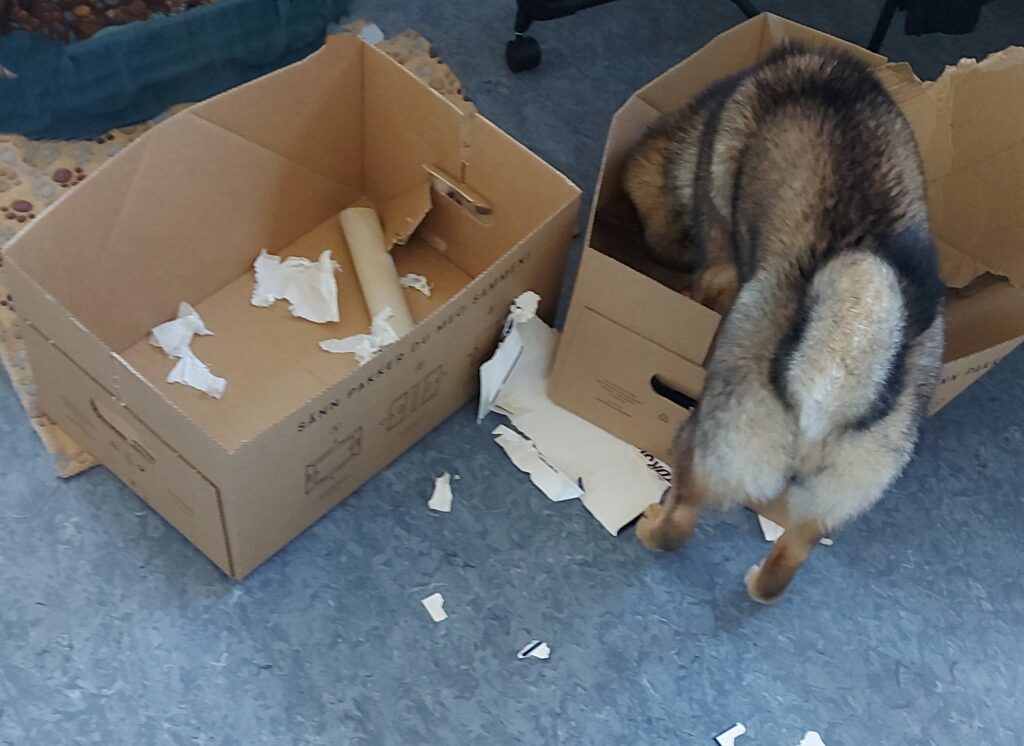

Due to the freezing temperatures in recent days here in Norway, I'm writing about mental activation indoors.
For me, mentally activating dogs indoors or outdoors is essential in dog training. It is more important to me that my customers mentally activate their dogs than if they walk with their dogs for 2 hours.
What is mental activation?
The brain of our dogs, just like ours, is a complex organ, and for it to function as well as possible, it must be stimulated, for example, by Mental activity. But not only for the brain but also for self-confidence and the feeling of success when something has been solved is significant for the development of our dogs and lays the foundation for a safe and calm dog, especially in puppyhood.
Mental activities are challenges that our dog can solve alone or with us, e.g., to get to the treat. But we must remember that it should be accessible initially because dogs learn better when they succeed than when they fail. Therefore, we should always choose the activities to be challenging but ensure that our dog has a sense of achievement at the end. It is also important to mention that it is worth choosing from different activities and continuously rotating them so that it is not too boring for the dog. If we do an activity for too long, at some point, it is no longer a challenge for the dog, and so it becomes less of an activity and more of an opportunity to get treats.
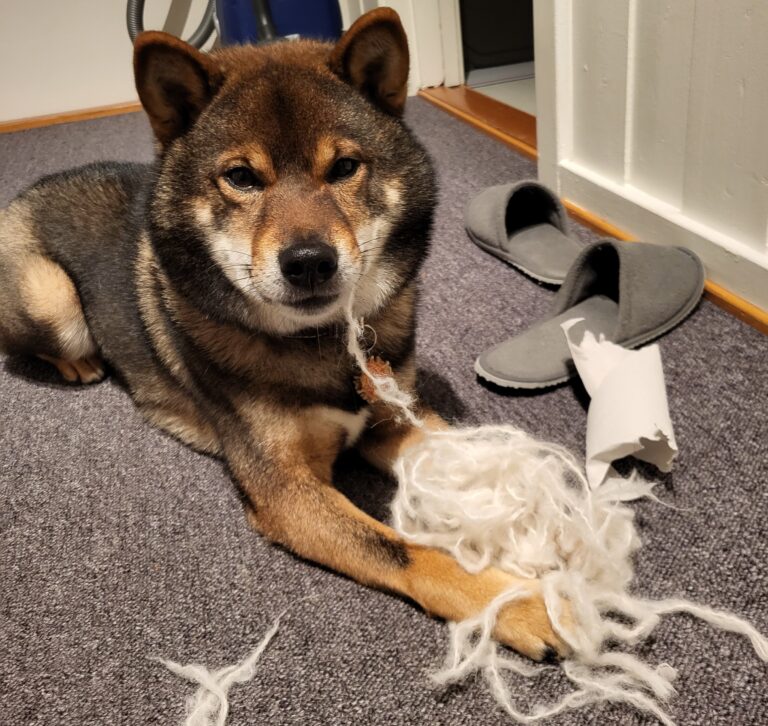
Why should I mentally activate my dog?
As mentioned above, mental activities stimulate the brain, and the success of solving them gives dogs a positive experience with challenges. If we practice this in puppyhood, we will get a self-confident dog that can remain calm in everyday situations and solve problems. Nothing is more admirable than watching Akito think to solve a challenge and then seeing him light up when he does it.
Aren't walks, throwing a ball, and other activities also good mental activities?
Mental activities can be incorporated into a walk, and I recommend doing so. Other activities, like throwing a ball/stick and jogging, are not mental activities and shouldn't be done, but this is a different topic I will address in another post.
What mental activities can I do?
Here are the best 12 tips I do regularly with Akito, and thanks to his perceived very high IQ, I activate myself mentally because I have to think about how to make it even more difficult for him. My tips include homemade and purchased items intended to mentally stimulate dogs.
1. Towels can either be folded individually or tied together in a braid to hide treats the dog has to get to.
2. Sniffing mats are available in different types and difficulty levels, and there are also good videos explaining how to make one yourself.
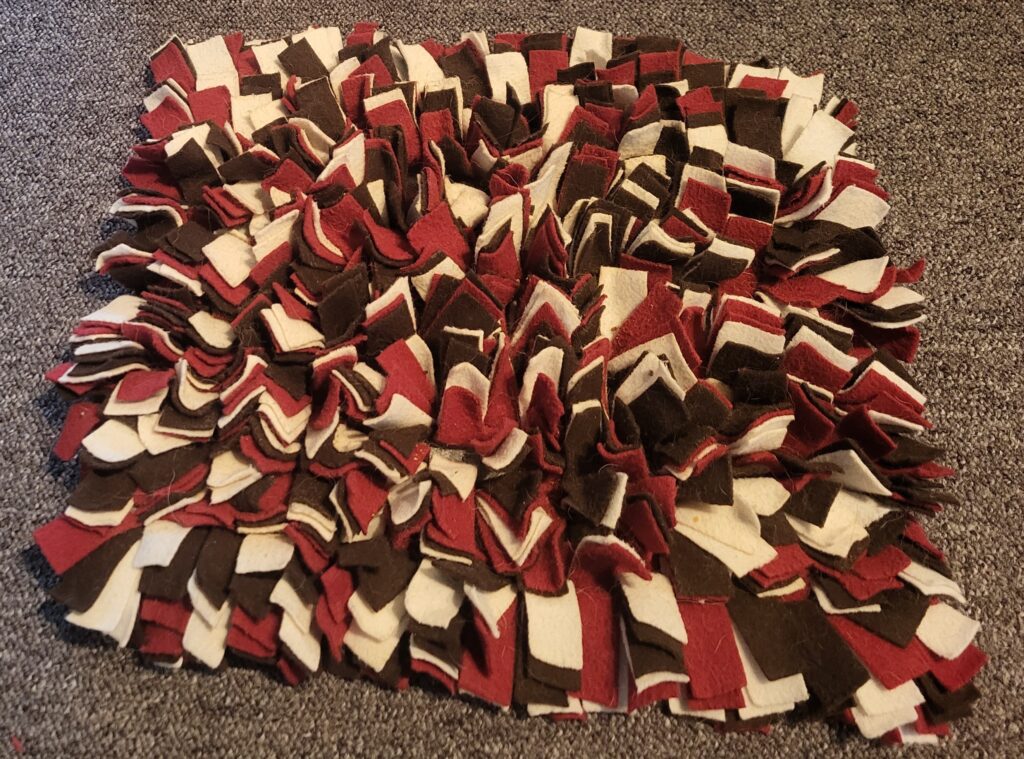
3. Toilet paper rolls or kitchen paper rolls that can be closed on both sides and filled with a few treats. You can then wrap the treats in paper or newspaper to make it even more challenging to get to them.
4. Kong wobbler can be filled with treats, and the dog has to try to knock it over so that something comes out. You need space for it, and you should be careful that the wobbler doesn't hit anything that could break and fall over.
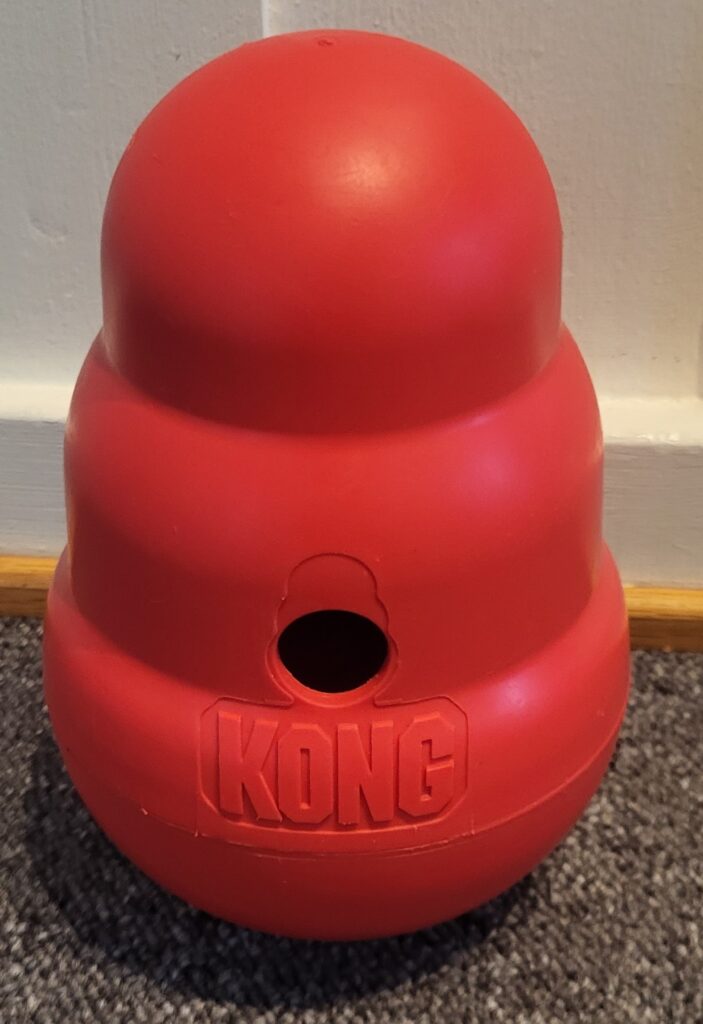

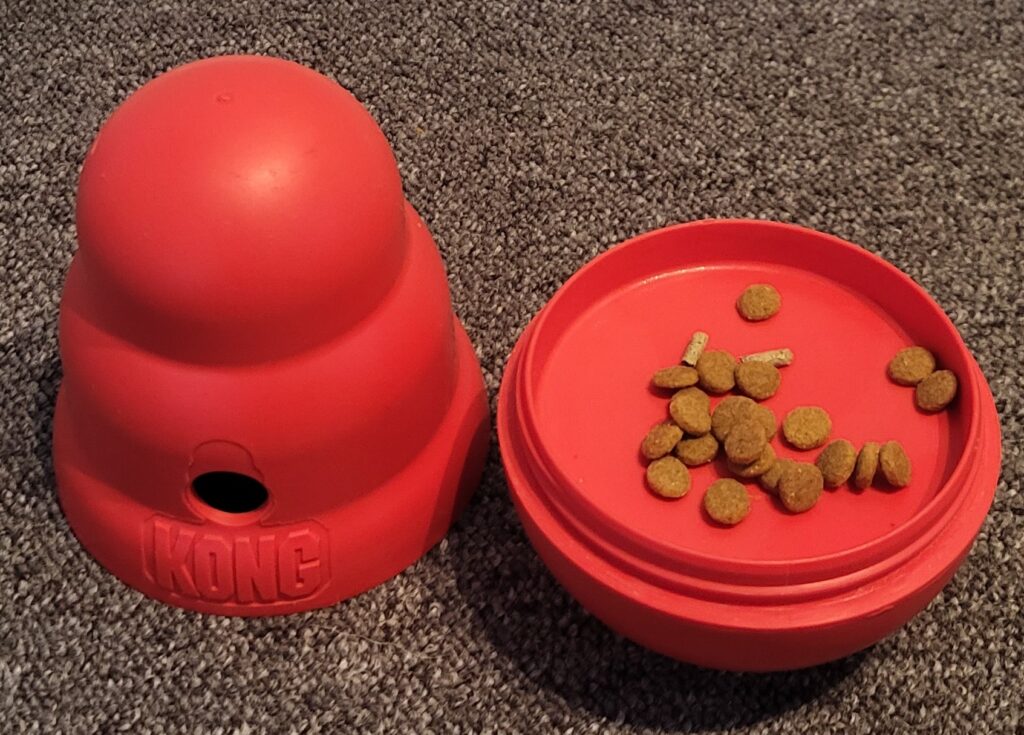
5. Socks: at some point, everyone has a broken sock or needs to be replaced. They are perfect for hiding treats, individually or made up of several braided socks, which are always a hit.
6. Kong gyro is similar to wobblers; you can put treats in there, and the dog can then try to get the treats out. It's smaller and not as loud as the wobbler sometimes is.

7. Simply scattering treats or dry food can be done both indoors and outdoors. This activity is at the top of Akito's list, as he loves to pick his own food. If it's not too cold, I also do it in the snow, which makes it a little more complicated.
8. There are different puzzle games for dogs, and there are so many that it is difficult to mention them all. Here is a selection that Akito has and that I am happy with.
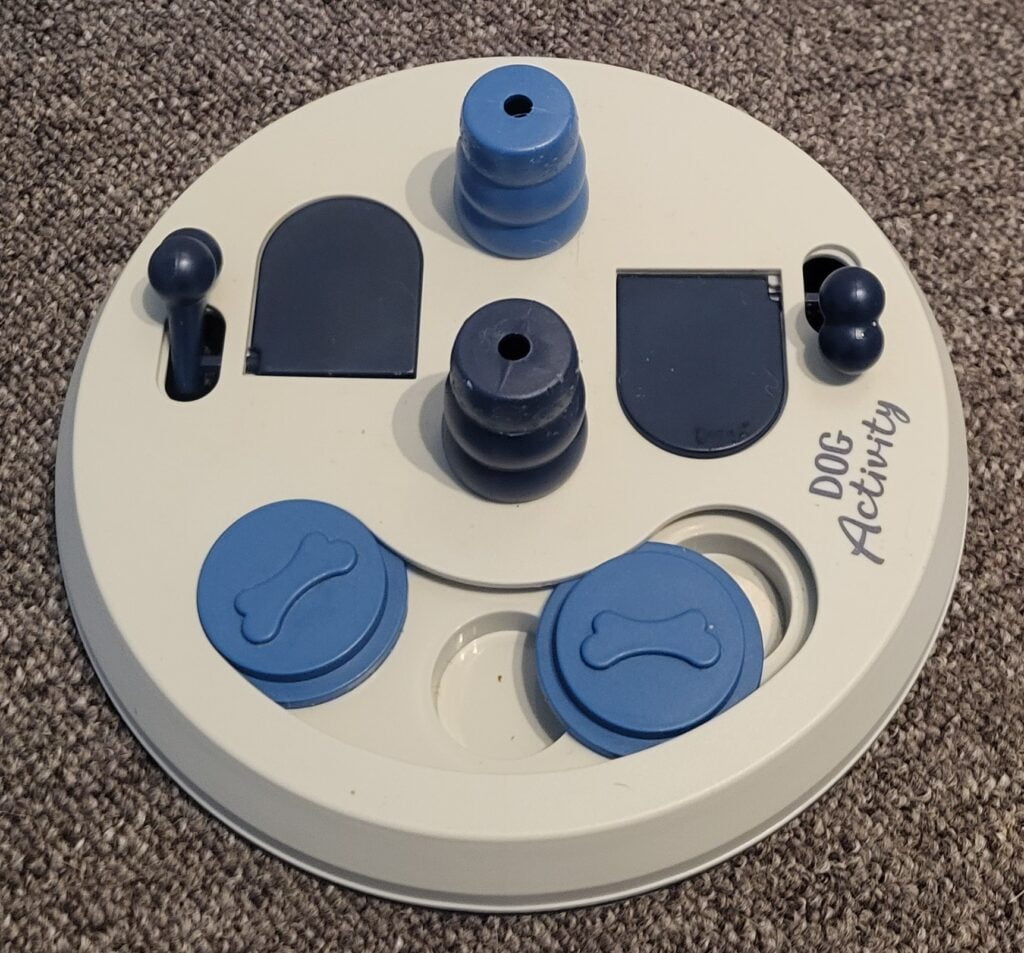

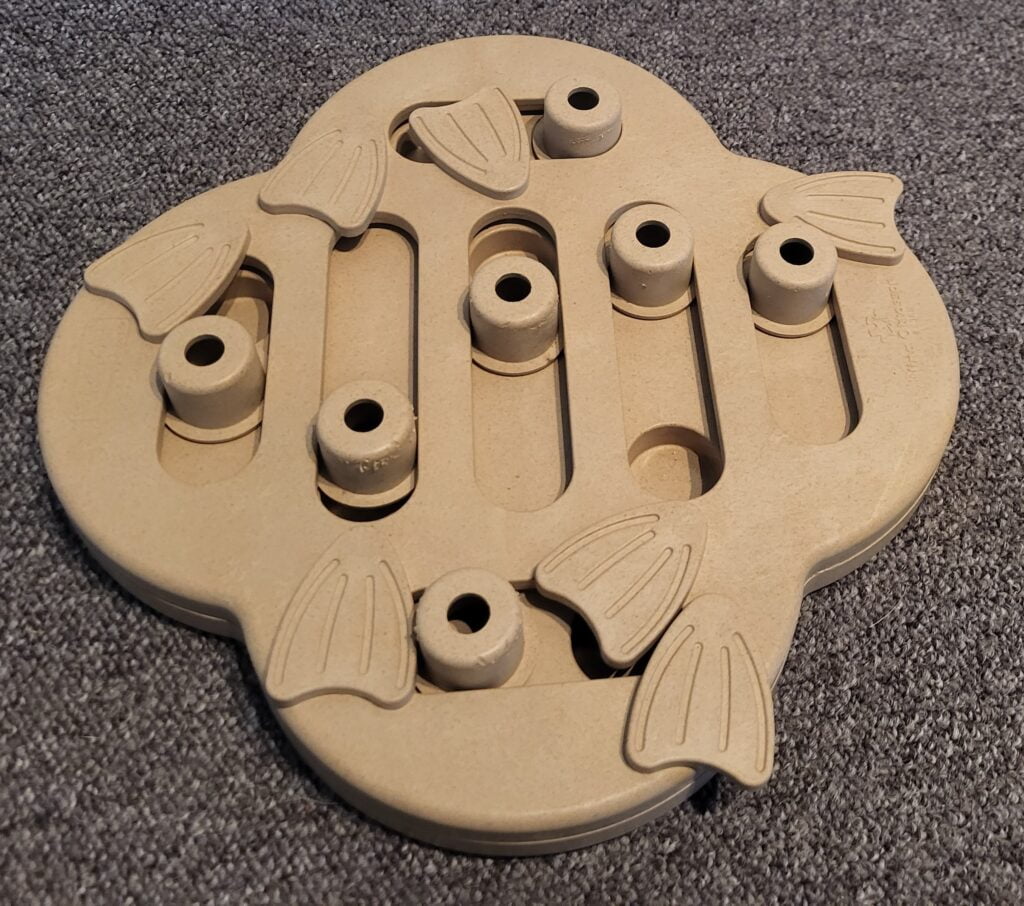
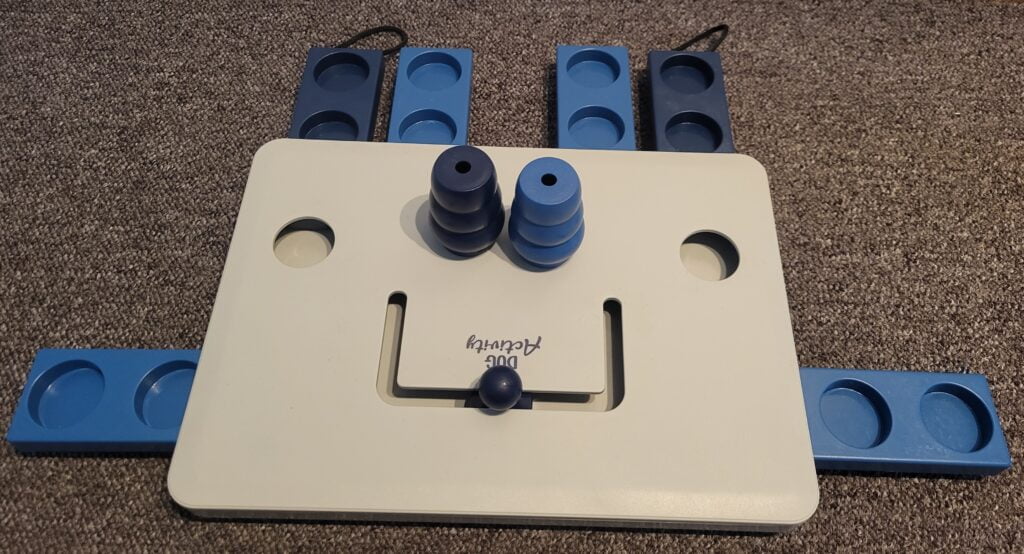
9. Place treats in a plastic bottle. Ensure the opening is larger at the beginning so it can be simple.
10. Muffin boards that have treats on the bottom are then hidden with cardboard, paper, or balls (if you have a ball junkie, please don't use balls).
11. Any cardboard where you can hide treats and the dog has to try to get to them.
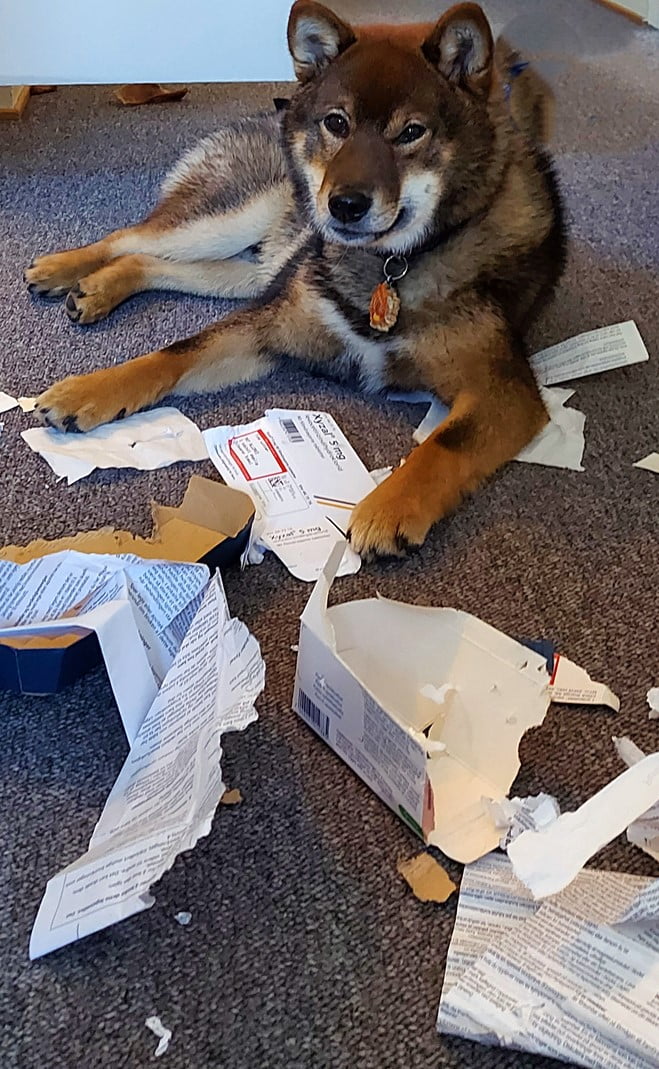

12. I specifically mention egg cartons because they are so versatile. Whether you use them in the way described for the muffin board or smear some liver sausage and spread treats over, it is up to you.
There are so many other ideas and suggestions for mental activities that it's challenging to write them all down. There are still many ideas on Google or excellent videos on YouTube; in the end, your imagination knows no limits.
Everything I have suggested here is completely safe for the dog, and you always have to be careful; no matter what you do, the dog shouldn't get frightened or injured. Of course, when it comes to cardboard, socks, and newspapers, you must be careful that your dog doesn't eat them.
I don't have a problem with Akito myself. I know he doesn't eat this and can use these materials without problems. But if you have a dog that likes to eat something like that, you will have to find other ways to exchange them.
I hope the post helped you get some ideas for mental activation. I hope you have fun trying it out. See you next time.
Post 10- 03.01.2024
Dog coats and a bit about cold and freezing
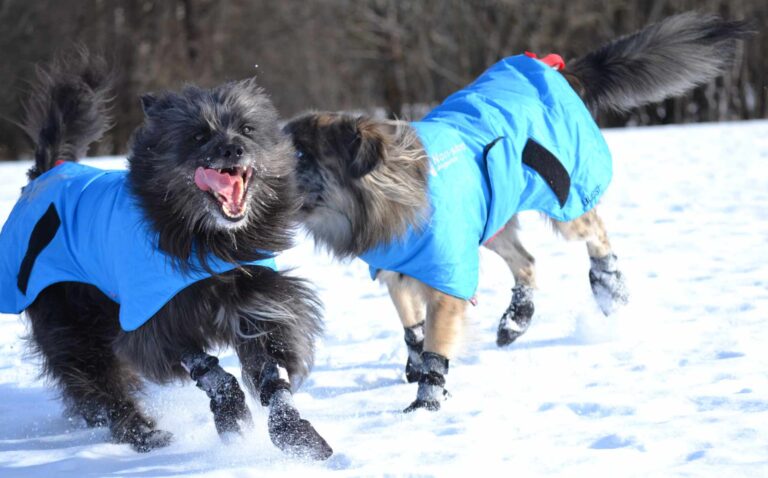
First of all, I wish everyone a happy new year and hope everyone and their four-legged friend started the new year well and with as little stress as possible.
Today comes the last part of the accessories series, and it covers the topic of dog coats. I will also talk a bit about freezing and cold in dogs, as this topic is now particularly relevant here in Norway as it will now be freezing here.
I want to mention in advance that I am referring to dog coats and jackets intended to protect dogs from cold, wind, and rain. By this, I don't mean accessories that have become fashionable to dress up the dog and make it cute.
Dog coats were a no-go for many owners for a long time. Many believed that my dog was descended from a wolf, and if the wolf doesn't have a coat on in winter, my dog doesn't need one. It didn't matter whether the dog was standing next to the owner and shivering from the cold. Nowadays, fortunately, we have moved away from this idea and understand that our dogs can also freeze in winter or general cold weather. But it's not just cold that can affect our dogs; wind and/or rain can also be uncomfortable for some dogs. Here, too, it is advantageous to observe your dog and have knowledge of the breed. But even within the same breed, there are differences from dog to dog, so it is essential to recognize and satisfy your dog's needs.
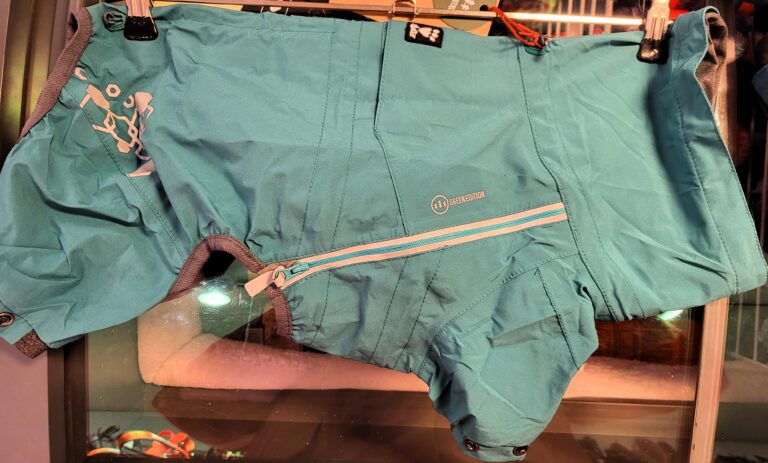
Why should we use dog coats?
Breed or origin: Many breeds have fur that is too thin (or no fur at all) or little to no undercoat, which does not protect well enough from the cold. If you live in a country where it can get cold and snowy, this can mean that most dogs start to freeze, and it would probably be appropriate to buy a dog coat for the dog. Which breeds are represented, e.g., Dobermanns, Greyhounds, Jack Russel Terriers, etc? But even for dogs with long fur (without an undercoat), wet conditions with cold wind can cause problems because they often get very wet, which causes their body temperature to drop, and it takes longer for the fur to dry on these dogs. If you have adopted a dog from another country, it is essential to be aware that the dog is not used to our temperatures and will freeze if we do not put a dog coat on it.
Age: Puppies that come to their owner in autumn/winter should have a suitable jacket available. The fur is not fully grown yet, so most puppies often have no fur on their stomachs when they come into the house. This means the dog's body temperature can drop quickly due to a cold stomach. Even if puppies shouldn't be outside for hours at the beginning, just 5 minutes can be enough for puppies to get sick because their immune systems may not yet be well developed. Older dogs (seniors) should also get a coat in their old age as they can also have a weakened immune system, and muscle loss occurs due to age; therefore, they can no longer keep their bodies completely warm.
Health: Dogs with chronic joint disease or muscle disease (e.g., osteoarthritis, hip joint dysplasia, etc.) can tolerate wet or cold very poorly, so it is good to protect your dog with a warm coat.
Active sports dogs: When we do sports in winter, we should dress nicely and warmly when we take breaks or when we are finished so that we do not get sick or injure our muscles due to the abrupt cooling down, and we should do the same with our dogs. If you actively participate in dog sports with your dog, the dog should wear a suitable coat before and after.

When should dogs wear a coat?
This depends entirely on your dog; every dog is different, so it is crucial to observe your dog and then put a coat on him if you notice that he is cold. Over time, you get a good feeling for your dog when and in what weather he starts to freeze more quickly, so you can intervene and help him before he starts to freeze.
But also remember that as dogs get older, they can suddenly start to feel cold, even though they never did before and never needed a coat. This can also change with age.
How do I know if my dog is cold?
Here we are again, watching the dog. It is vital to watch your dog outside to prevent him from freezing or even hypothermia, which can then become life-threatening.
Signals that the dog gives us when he is cold:
- Tremble
- Not wanting to go any further, he stops
- Stiffening of the body
- Try to get home faster than usual
- Appear apathetic
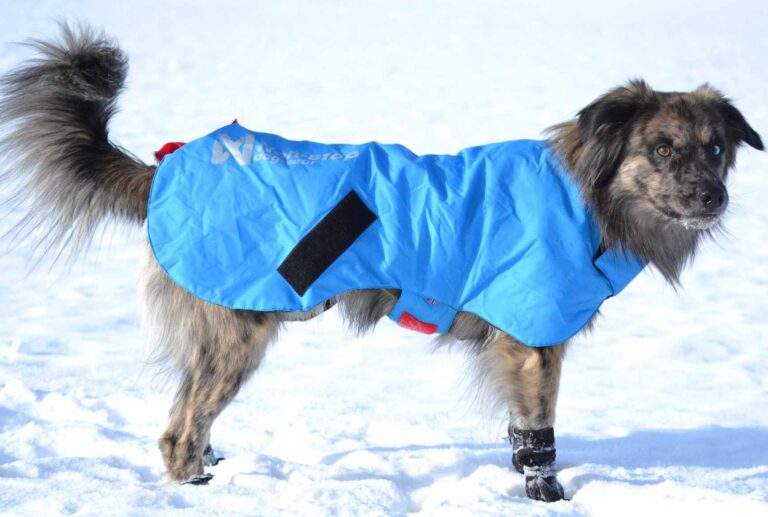
Which dog coat should you choose, and what should you consider?
Here, too, it depends on what your dog reacts to. If you have a long-haired dog without an undercoat, it may be that normal cold doesn't affect him, but if he gets wet, he freezes. A raincoat would be recommended. Other dogs only react to wind, and others need a warm coat at around 5 degrees. Observe your dog, notice its needs, and seek advice from a good pet shop. Especially for your first coat, getting advice and trying out different ones is essential.
The dog should have freedom of movement despite the coat; the coat should not rub or slip, and ensure that the harness or collar has space and an opening to attach the leash. It is recommended that the coat should cover the stomach and keeps it warm. Which is especially important for small dogs, especially when there is snow.
If you have a Husky, a Shiba, a Samoyed, or other Arctic/Nordic dog breeds that can withstand the cold more than others, there is still something to consider. Just because you have a dog from a cold country does not mean your dog can tolerate the cold well. As I said, every dog is different, including the breed.
Watch him; if he's cold, a husky can also wear a winter coat. But be careful. If dogs with thick fur and an undercoat wear a coat too much or unnecessarily, this can destroy the layer of fat in the coat and make the dog more sensitive to cold.
This also applies to washing these dog breeds too often.

What should I generally pay attention to with my dog when it's cold?
Here, I am referring more to the temperatures that we (Norway) will face in the next few days (up to -35 degrees in some parts).
- Shorten your walks
- Don't stay standing for long, as your dog can get a pelvic or kidney infection if he sits outside in the cold for too long
- Use paw socks and coats to keep your dogs warm outside
- If your dogs get wet from the snow, dry them well when I come back in so they will warm up more quickly
- Warm places to sleep inside to warm up again
- Do more mental activities with the dogs indoors to keep them busy when you are not outside for as long
Every dog tolerates cold differently, and there is no conclusion about which temperature to protect your dog. Although our dog is protected by fur. The cold air can cause him problems in the mucous membranes in the eyes as well as in the ears (especially erect ears) and Lungs.
That's why I appeal to common sense: watch your dog and help him get through this cold.
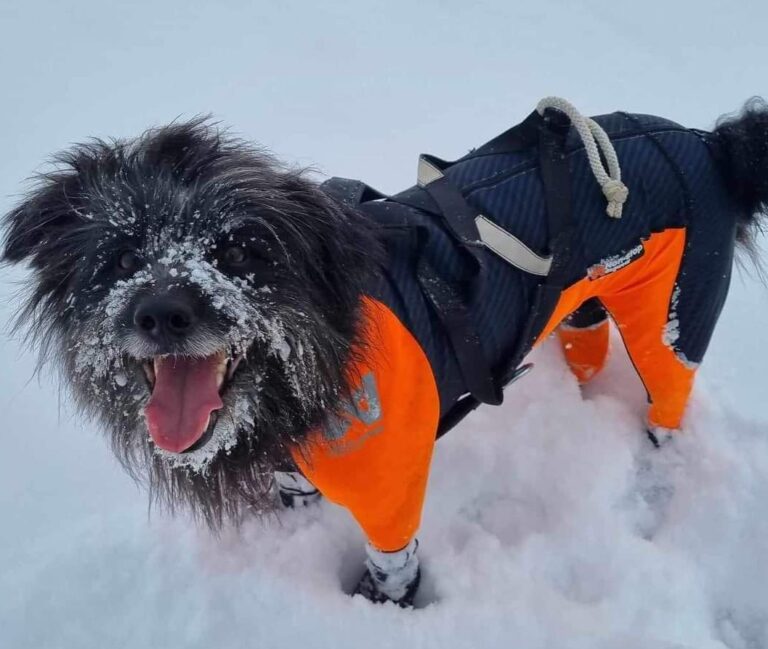
Post 9- 25.10.2023
Sleeping places and beds for dogs
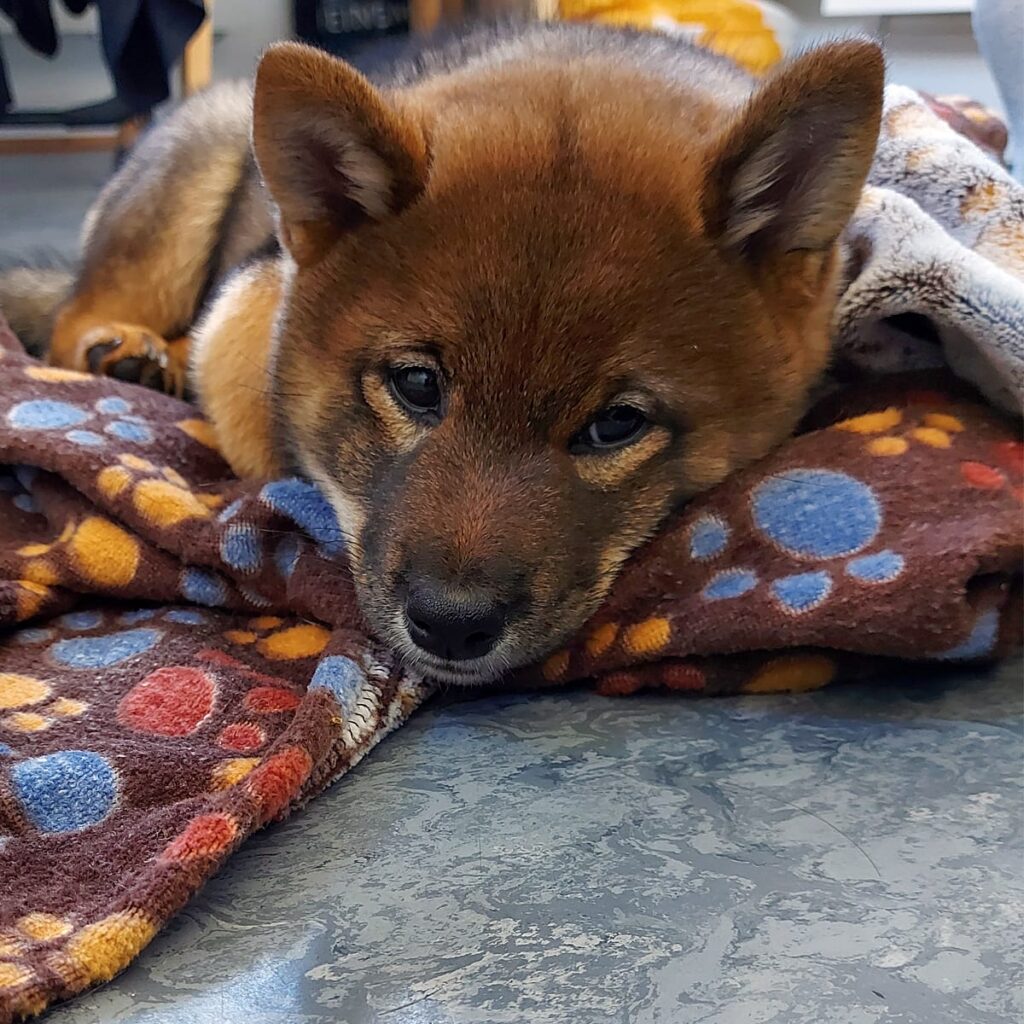
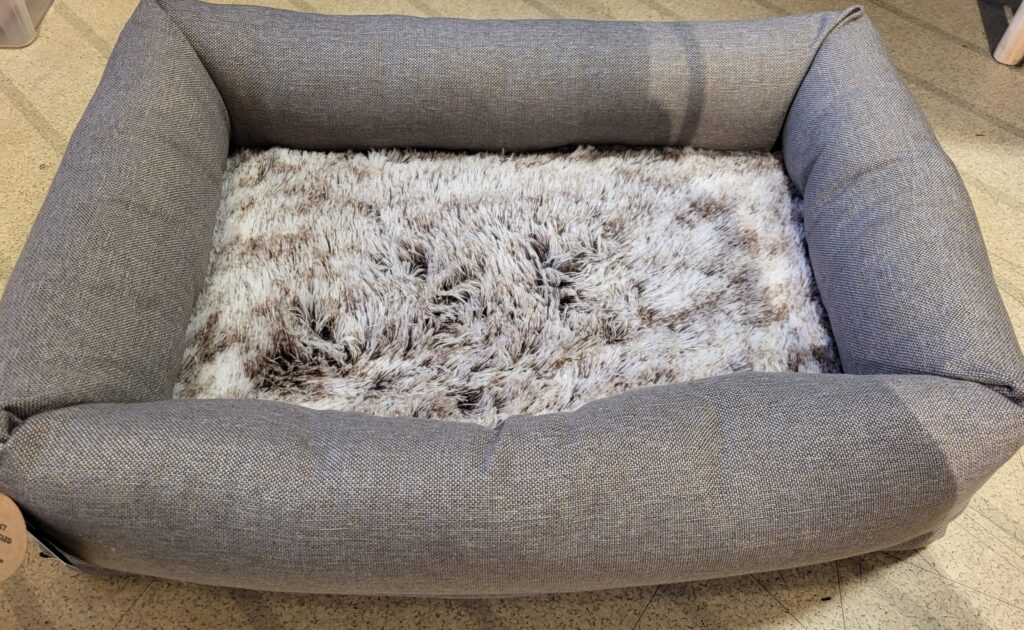
Adult dogs sleep between 12 and 14 hours, puppies and older dogs even more, but unlike us, our dogs sleep in intervals, never through like we do. They often wake up sleeping in one place and search for a new place to sleep. That's why we must allow our dogs to choose between different sleeping areas. You're probably wondering why it's essential for our dogs to have multiple places to sleep; I'll explain it to you here.
To explain why, we need to pay attention to various factors.
- Temperature: whether it is warm outside or inside, most dogs like it a little cooler and often prefer the cool floor in the kitchen or bathroom. Again, it depends on the dog's fur, as a dog without fur or with less fur might prefer to lie on a warmer surface despite the heat outside. Or the other way around, when it gets colder out, the warmer sleeping places are probably used more.
- Noise or high stress levels: you've probably already experienced your dog lying alone in a room. You then go into the same room, turn on the TV, or talk to someone on the phone, and the dog gets up and leaves. This may be because we are too loud and are exuding stress that may be invisible to us at that moment.
- Physical ailments: our dogs are also exposed to physical conditions like us. Whether it's tension in the neck or muscular problems in the hips, our dogs must decide for themselves which place to sleep is best for them. But a dog bed doesn't prevent these problems, so seeing a physical therapist who can help your dog is essential.
- The desire to be alone or with the family: different sleeping places allow our dog to choose whether he wants to have some time for himself and can withdraw or satisfy the need to be with the family. Both are important for our dog.
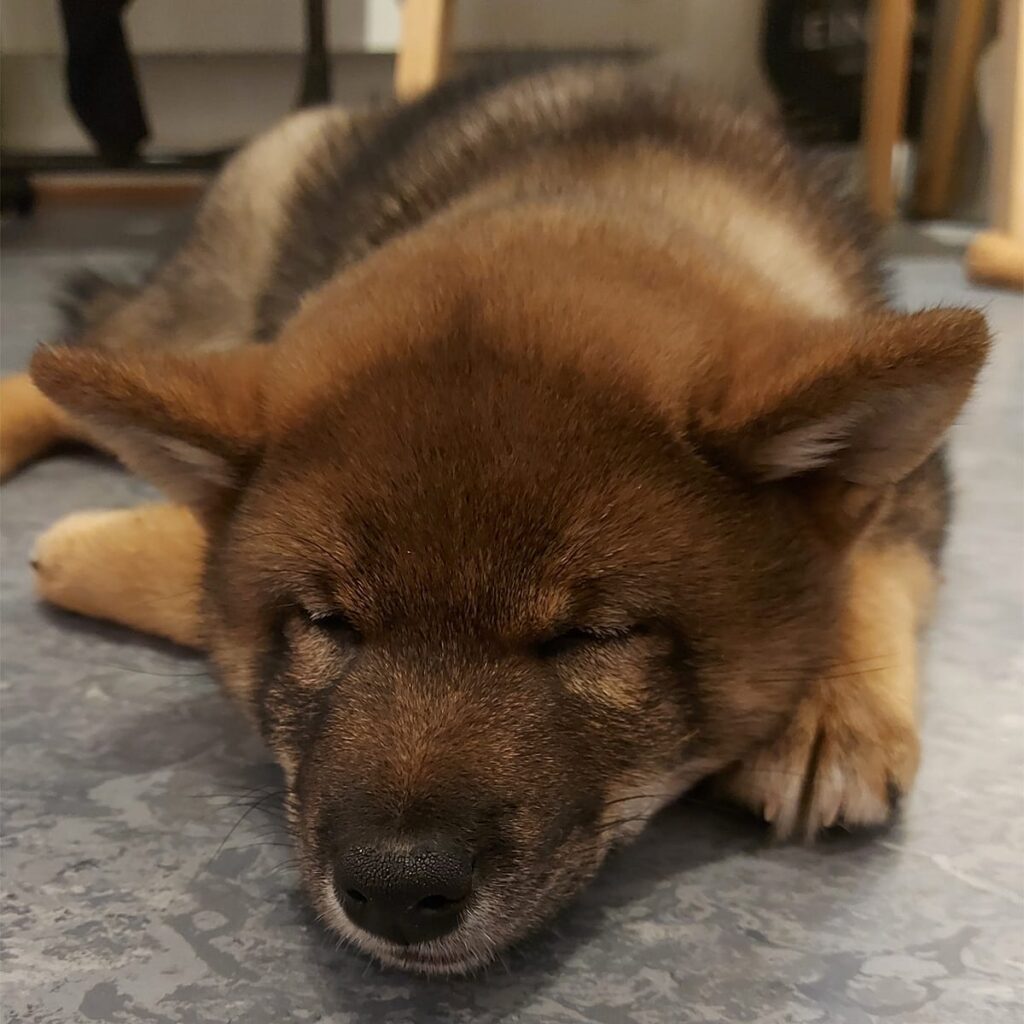
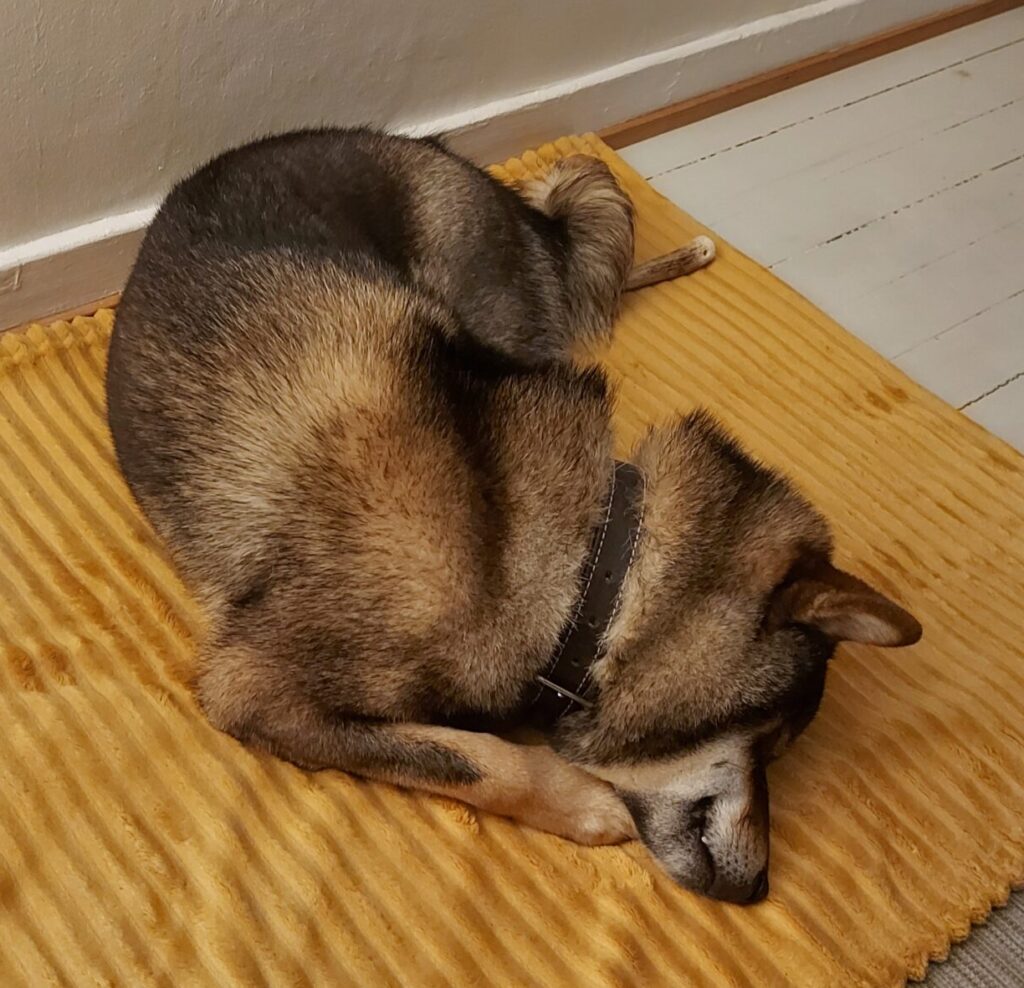
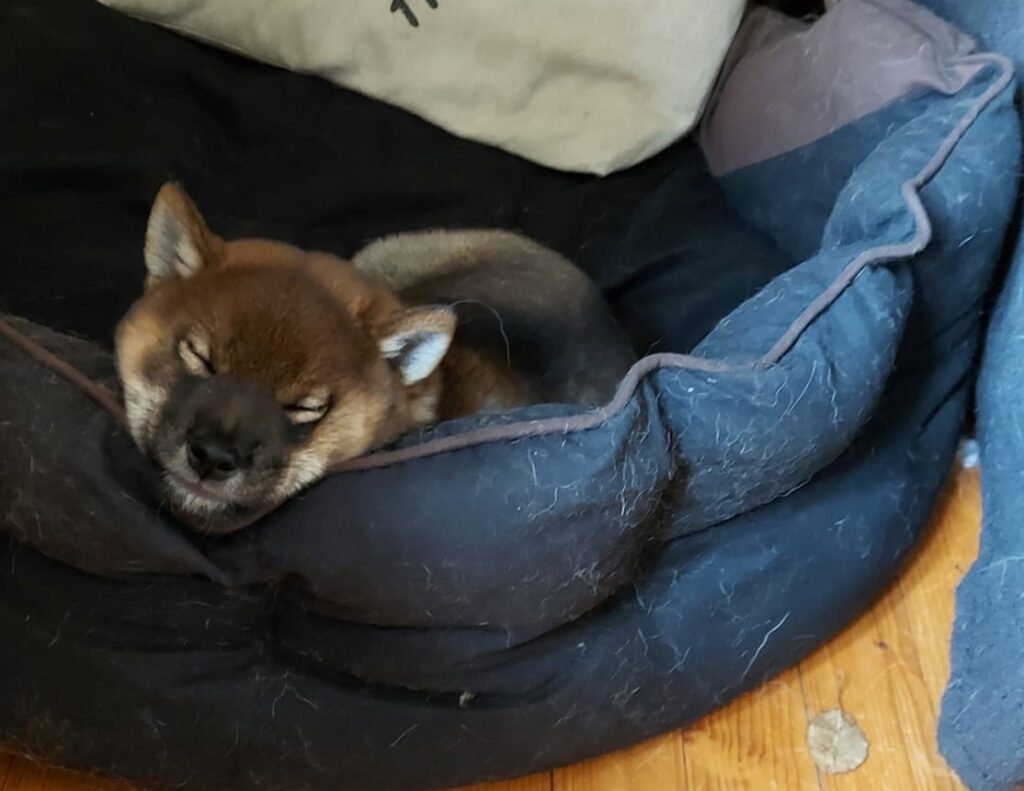
As you have read, our dogs have different needs, so satisfying them and providing additional places to sleep is essential. But that doesn't mean you should lay out five dog beds and seven blankets throughout your apartment. By sleeping places, I also mean the general floor (wood, tiles, or PVC) or the carpet in the hallway.
These surfaces are also very popular with our dogs, and it should be okay for us if they want to lie there. Then, you could lay out two blankets in different places and/or a coat of fur, which will cover a large part of the needs.
You can now add a dog bed so the dog can lie a little higher and lean his head against it if he likes.
But all of this also costs money, so it's essential that before you spend a lot of money on blankets and beds, observe your dogs and get a feel for your dog's needs (don't listen to reviews; your dog is unique and may have completely different needs as a neighbor's dog).
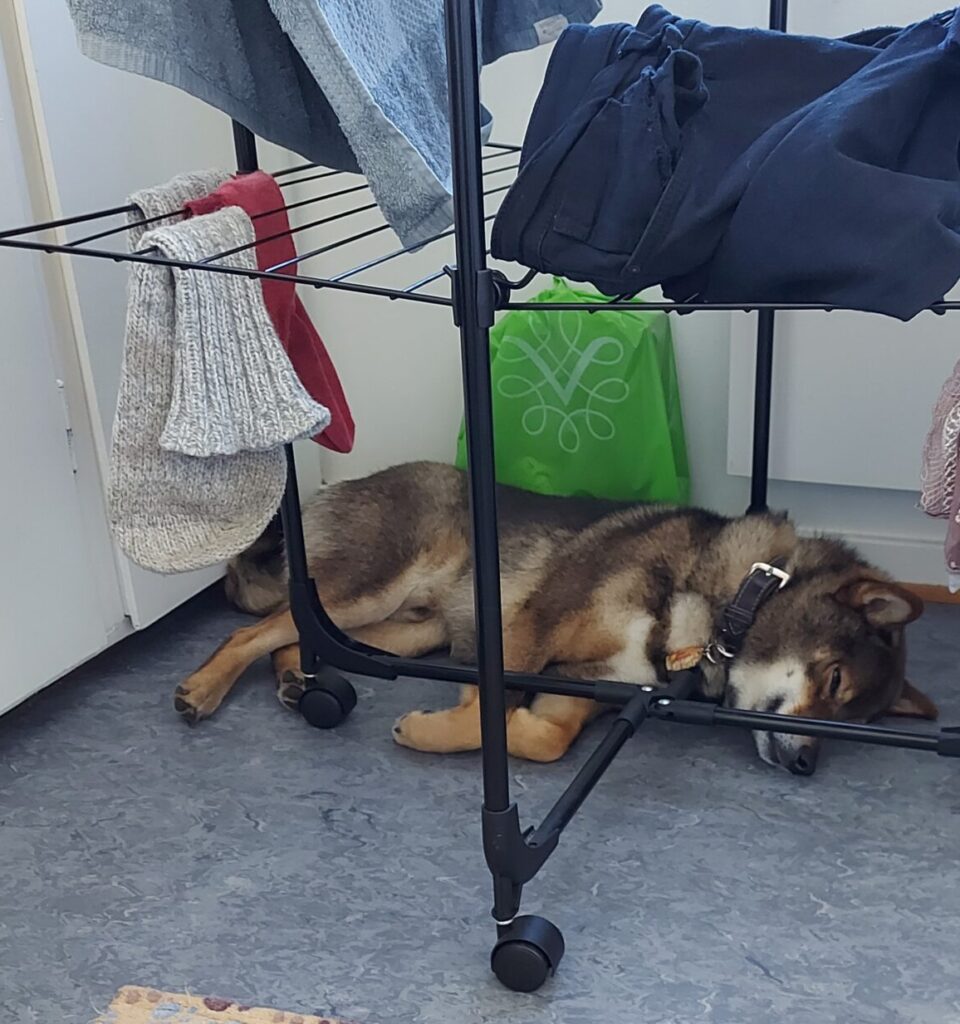
It doesn't always have to look comfortable for us
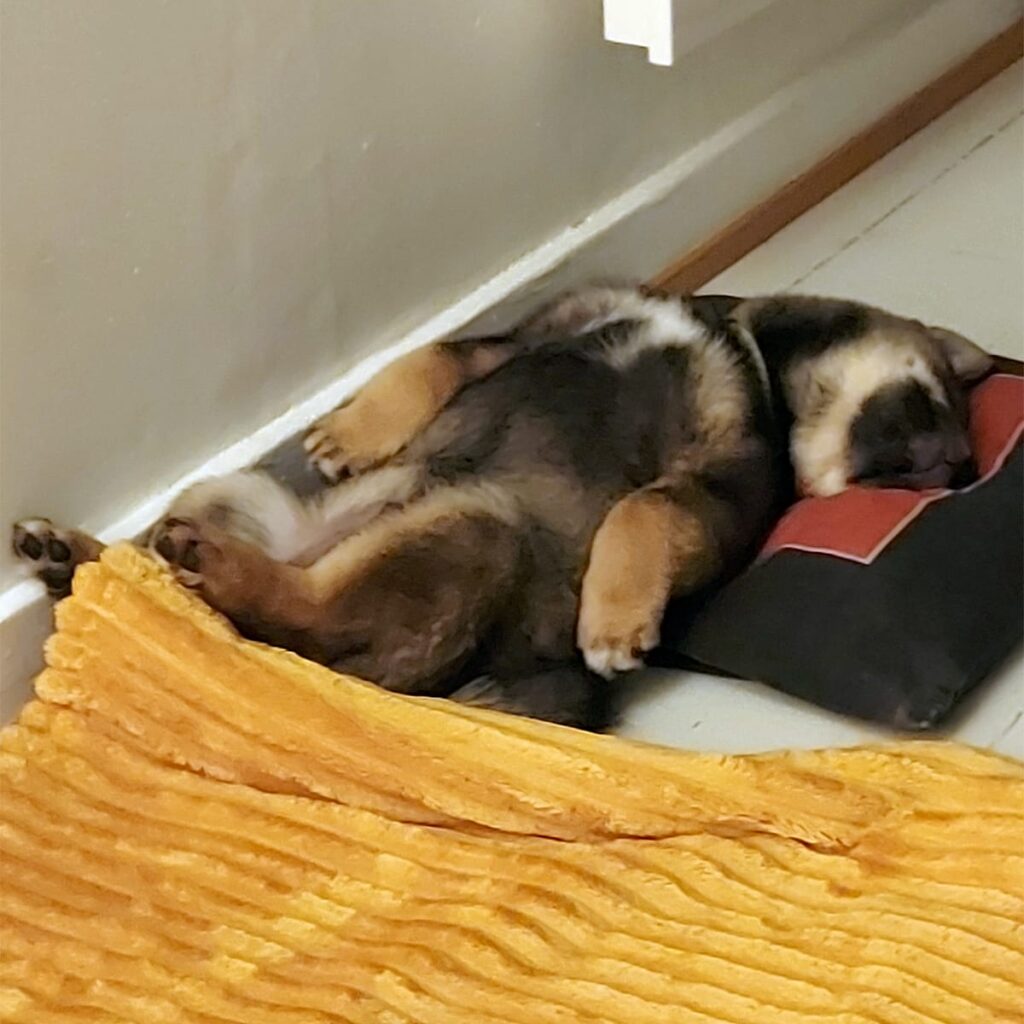
Now, I will introduce you to the most famous dog beds. No, not one of them is the sofa, even if it is trendy, but that is a decision that everyone should make for themselves, and this decision has nothing to do with the dog's well-being.
But before that, I wanted to highlight the most essential thing about sleeping.
If your dog is sleeping, please let him sleep peacefully, no matter how cute he looks. Waking him abruptly can lead to dangerous situations, which is simply unnecessary. You don't want to be woken up just because someone thinks you look so cute.
Dog bed´s
Reasons for a dog bed
- It can be a retreat and resting place for your dogs. Please pay attention to where the dog bed is placed; we recommend a quieter place where you don't have to walk past it much.
- Dog beds can improve our dogs' sleep. Some dogs cannot lie on a hard, cold floor for too long, forcing them to get up and find a new place to sleep. The warmer and softer material of the dog beds can prevent this and allow the dogs to sleep longer. However, this does not apply to everyone, and some dogs like to sleep on a hard floor.
- A dog bed can also be beneficial if you want to prevent or alleviate orthopedic diseases. The rectangular dog beds or the so-called orthopedic dog beds are more recommended here. Because these beds have a so-called memory foam, this adapts the body shape perfectly and relieves pressure on the hips, shoulders, and joints, and the spine is kept straight. This leads to blood circulation, and thus, pain can be alleviated. These beds are particularly recommended if you have breeds that have a higher risk of osteoarthritis, arthritis, joint diseases, hip diseases, spinal diseases, or rheumatism. By using an orthopedic bed, you can prevent or alleviate the symptoms.
How big should the dog bed be for my dog?
The standard length that you take is from the tip of the nose to the beginning of the tail, and then you add about 30 cm to this length, preferably a little larger than much too small. Especially with large dogs, it is essential to make sure that they can stretch out and still fit in, as these dogs, in particular, suffer from the orthopedic diseases mentioned above.
Below, you can see a few pictures of the most popular dog beds on the market. It's difficult to say which is suitable for your dog - as I've often said, it depends on your dog's needs, so that I won't go into detail about the individual beds here either. It is essential to observe your dog and recognize the needs that the dog has. Then, it would be best to go to a good pet store that gives you good advice based on your dog's needs. If you live in Oslo, I recommend my local pet shop, Acela Hund og Katt. They have a large selection of beds and other accessories for dogs (and cats) and can give you good advice with a lot of experience and knowledge. You find the links to Acela Hund og Katt under the pictures.
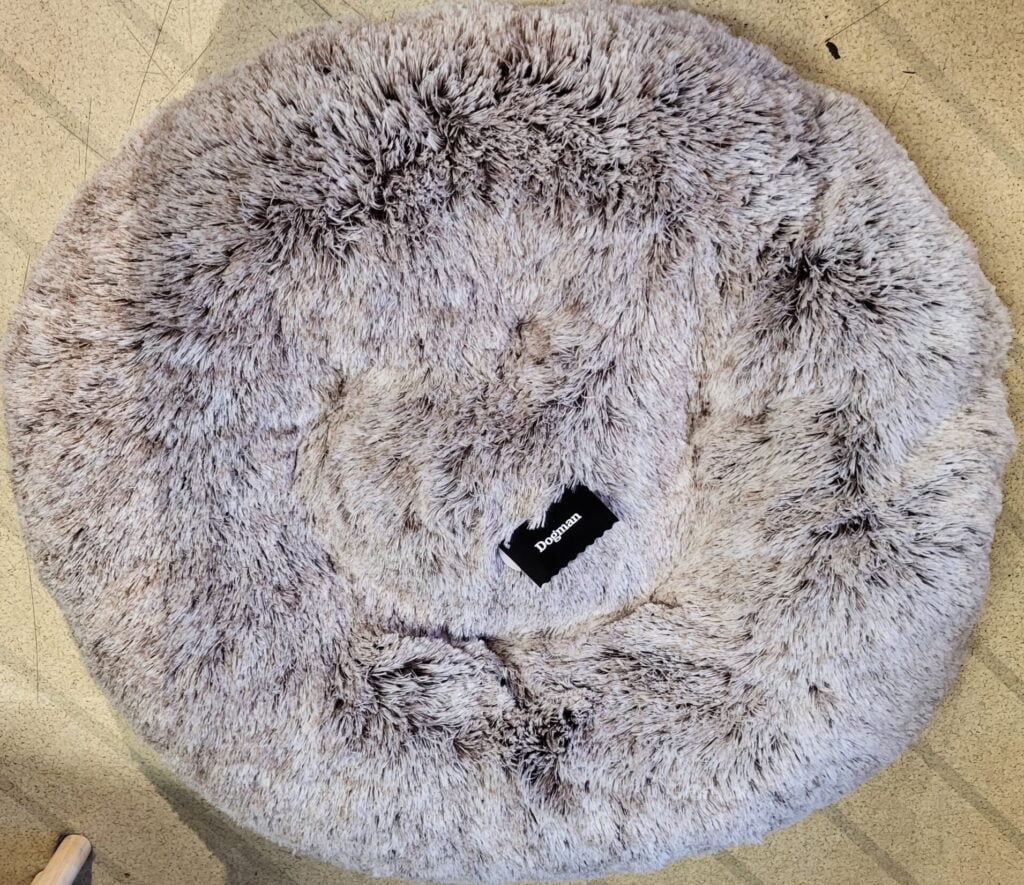
Donut
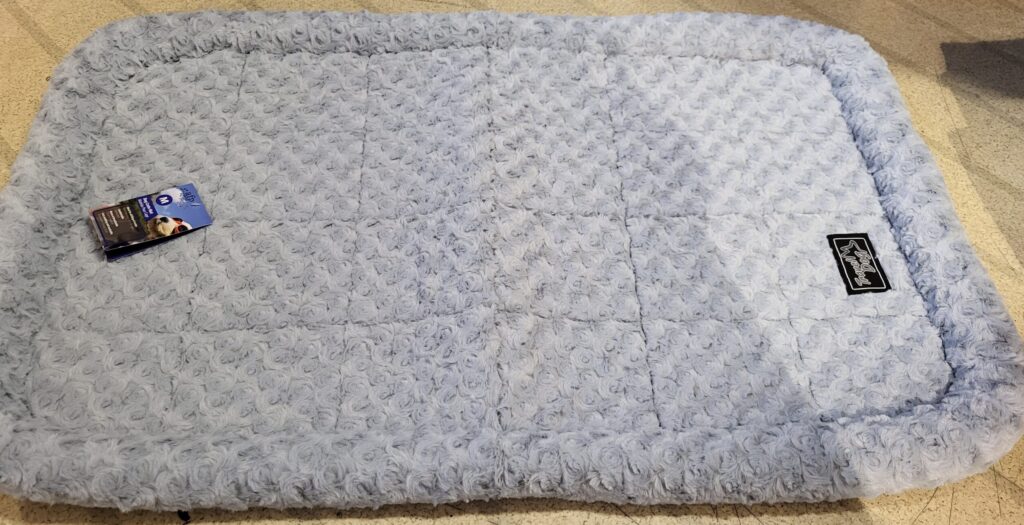
Dog blanket/dog mat
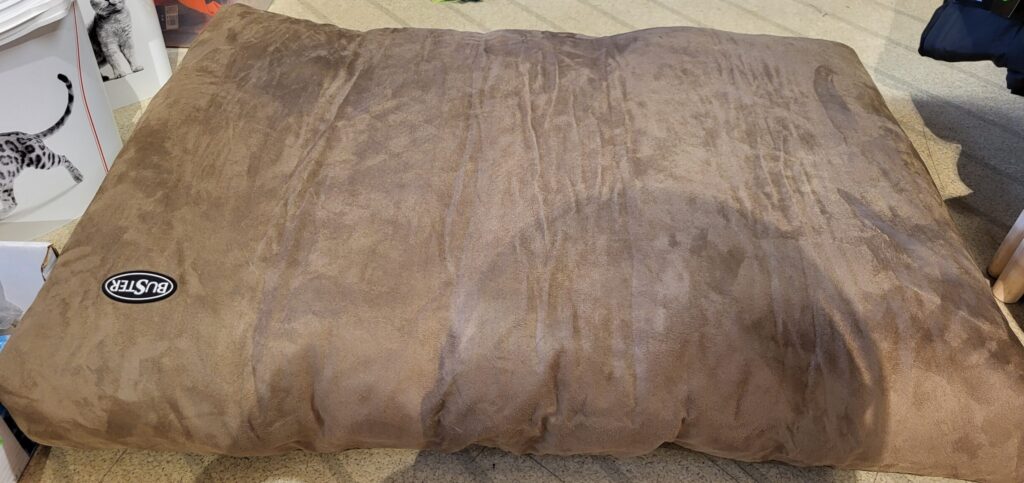
Dog cushion/dog mat

Orthopedic bed
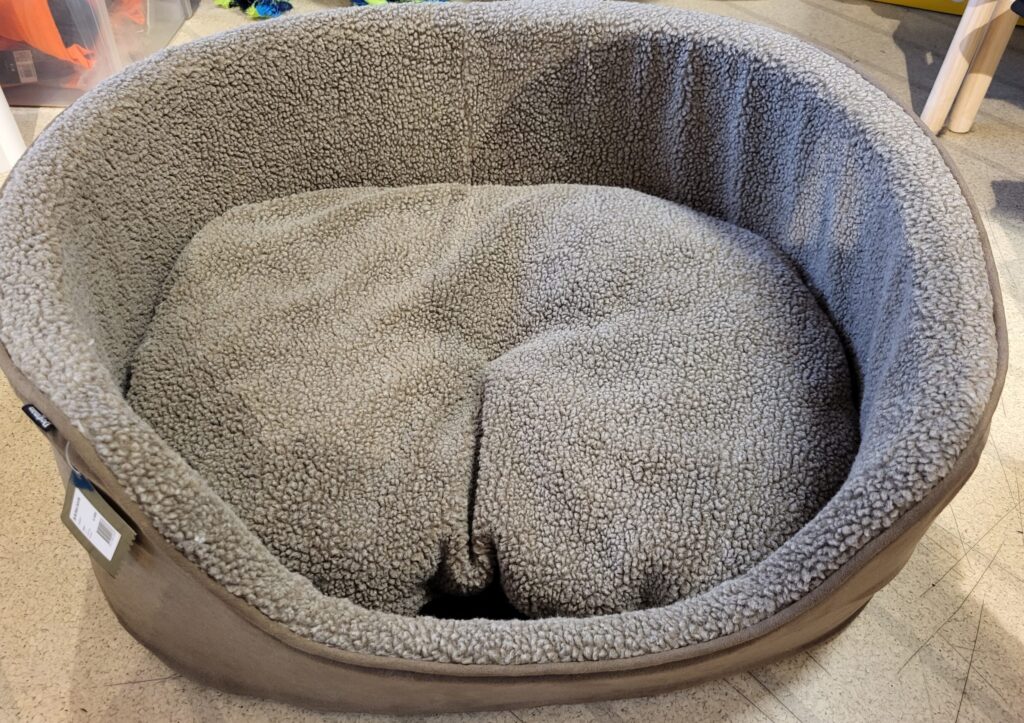
Normal dog bed
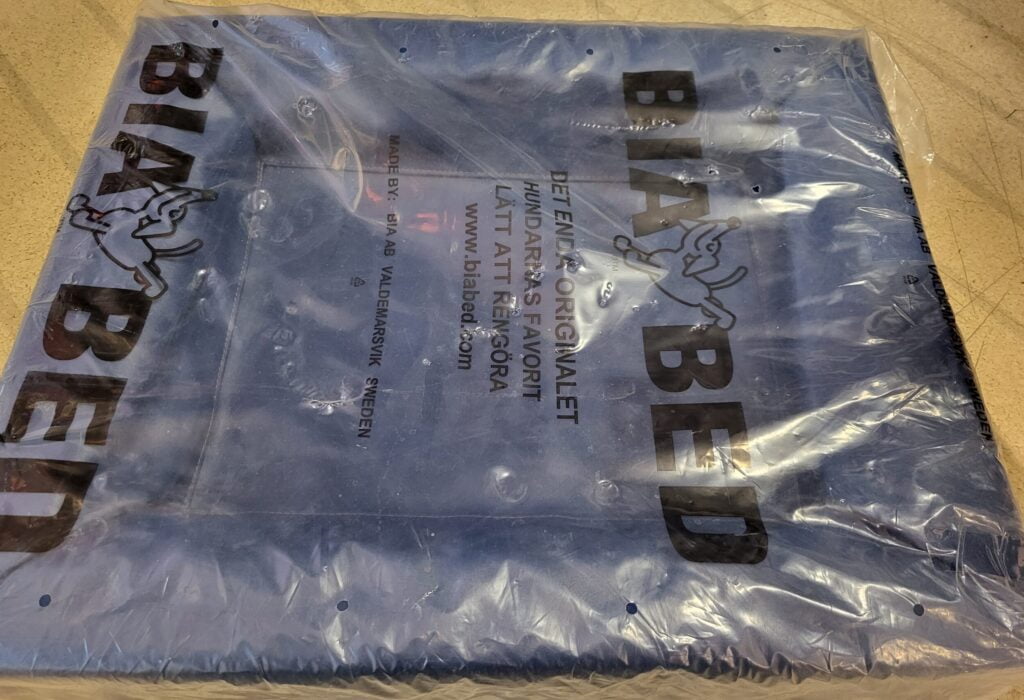
Bia Bed normal or ortho
Acela Hund og Katt provided the products in the pictures. Thank you
Post 8- 18.10.2023
Grooming and claw care

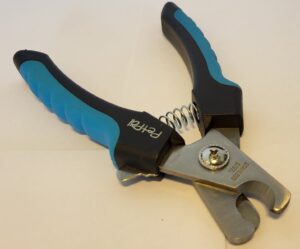
In the third episode of my accessories series, I would like to write about fur and claw care. I will explain the differences in the type of fur of dogs, what you should pay attention to, and which brush or comb is suitable for which type of fur. I would also like to highlight the importance of trimming claws, what you must consider, why it is necessary, what tools are available, and their advantages and disadvantages. Have fun while reading.
Grooming
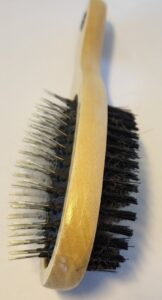
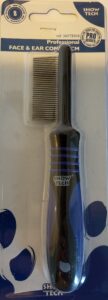
When it comes to grooming and which brush or comb you should use, we first have to look at the type of coat the dog has to decide what is best.
Double coated: This is the most common coat type; it has an outer coat and an undercoat, and there is shedding in both spring and autumn. During a coat change, usually, only the undercoat is lost. You can easily despair during this period because it is a lot, and you get the impression that it never stops. However, most dogs no longer shed after they change their fur. The top coat can be short or long, and the undercoat is usually just as long as the top hair. Examples of breeds include German Shepherds, all sled dogs, and Shibas.
Short-coated: Short-haired dogs have little to no undercoat. Their coat change is relatively mild but very frequent. Examples of breeds include Boxers, Dalmatians, and Weimeraners.
Long coated: Long-haired dogs have a lot or little undercoats and need regular grooming, not just when shedding. Otherwise, the fur can become matted. Examples of breeds with little undercoats include Irish Setters and most other long-haired hunting dogs. Examples of breeds with a lot of undercoats include Collie, Bobtail, and Briard.
Wire Haired: This fur is water-repellent, robust, and relatively hard. They have a dense undercoat that must be plucked because the density of the fur prevents the dead hair from falling out on its own. Examples of breeds include German Wire-haired Pointer, Wire-haired Dachshund, and Border Terrier.
Curly coated: Curly dogs do not shed their fur and shed little to no hair, which makes them very allergy-friendly. Nevertheless, these dogs also need care by regularly trimming them to a certain length. Examples of breeds include Poodles, Lagotto Romagnolo, and Portuguese Water Dogs.
It makes sense that every dog, regardless of what type of coat it has, is brushed by its owner. Firstly, so that the dog gets used to it and doesn't react when you have to brush for a specific reason. Secondly, you can remove the dead hair and prevent matting.
Dogs with little or no undercoat should be groomed with brushes or combs.


Dogs with rough hair or wire hair need to be plucked, so it makes sense to have the right plucking scissors for this.

Dogs with an undercoat should use brushes that only remove the undercoat, as the top coat should remain intact. For example, the Furminator is popular with many.

It is recommended to use a suitable clipper or visit a qualified dog groomer for dogs that need to be clipped.
Claw Care

Our dogs' claws must be trimmed regularly. Every dog is different. Some need to be cut every week. Others need to be trimmed once a month. For others, the natural wear and tear is enough to prevent the claws from becoming too long.
What can happen if we don't cut them regularly?
- The nails can break or get caught on something, causing them to bleed profusely.
- It can grow into the skin (especially dewclaw) and thereby cause inflammation.
- It is uncomfortable for dogs to walk or stand on long claws, which can change their usual gait.
What is the correct claw length?
When you hear your dog running on the floor, you know it's time to trim his nails again. They should not touch the floor, so you shouldn't hear your dog when he is moving.
Claw scissors or dog nail grinder?
You can choose between the traditional claw scissors and the somewhat newer product of the claw grinder. Both have their advantages and disadvantages, which I will list here. But what you use ultimately depends on what you and your dog feel safest and most comfortable with.


Claw scissors
Pros:
- Claw scissors are cheaper than dog nail grinders.
- Claw scissors are less noisy than the dog nail grinders.
Cons:
- The accuracy can be lacking, and you cut into a vein faster, and it starts to bleed.
- The claws can splinter more quickly.
- Claws cut by scissors can be sharper and can cause injuries.
Dog nail grinder
Pros:
- They are slower, which gives you better control over when to stop and gives you the security that you won't damage the vein.
- You'll get it done quicker since you don't have to hesitate or be precise with the grinder like you would with claw scissors.
- If the head of the grinder becomes worn out, you can easily replace it, and you don't have to buy a new device, as is often the case with claw trimmers.
Cons:
- This depends on the manufacturer, but most grinders are very loud, which can be unpleasant for the dog, so you should get good advice and choose the quietest one.
- The claw grinder is expensive
Get good advice from a pet store and find out what suits you both best.
Acela Hund og Katt provided the products in the pictures. Thank you
Post 7- 11.10.2023
Leashes


I want to write about the three most used lines in the second series of accessories: the regular leash, retractable leash, and long leash.
Regular Leash

3m leash with loop and one carabiner

3m leash with 2 carabiner and metal rings attached to the leash
Most leashes are made from either nylon, leather, rope, or Bio Thane, and standard lengths are between 1m and 5m. The usual leashes have a carabiner at the front and a loop for the hand at the back. However, some leashes have a carabiner at each end, and metal rings are attached to the leash to adjust the length.
I find it challenging to find the pros and cons of a regular leash, so I will describe here what is important to consider when buying a regular leash.
Important to know:
- 3m leash: The leash should be at least 3m long, preferably longer. Why? With a too-short leash, we limit our dog too much in his natural needs and communication. If a leash is too short, specific movements cannot be carried out to communicate with other dogs or people. This, in turn, can lead to frustration for your dog and miscommunication between your dog and the recipient. Our dogs love to sniff, which is also an essential part of them that they should pursue. But with a too-short leash, we take away much of the freedom they need for sniffing. If leashes are too short, dogs can start to pull because they want to get to that track but don't have enough length to get there, and we find ourselves pulling on the leash in annoyance and dragging our dog behind us. It shouldn't be like that. Research has shown that dogs with a longer leash (min. 3m) pull less than those with a short leash, as these dogs have more freedom and do not feel the need to pull because they get to where they want to go.
I will also put a few links here so you can read more about it.
-Carabiner: You should look closer at the suitable carabiner on the leash. Two things are essential here: how heavy is the carabiner compared to your dog, and is the carabiner clasp secure? If you have a small, petite dog, you should ensure that the carabiner is not too heavy, or even if you have a large dog, the carabiner should be adjusted accordingly so that the carabiner does not disturb your dog. From reports from others and my own experiences, I know that the bolt carabiners, in particular, can tend to open too easily, which means that your dog is no longer on a leash. He is now exposed to other dangers, especially if he wants to enjoy the freedom he has gained. I prefer leashes with BGB snap hooks or carabiners with locking devices to ensure the leash cannot come off the dog.
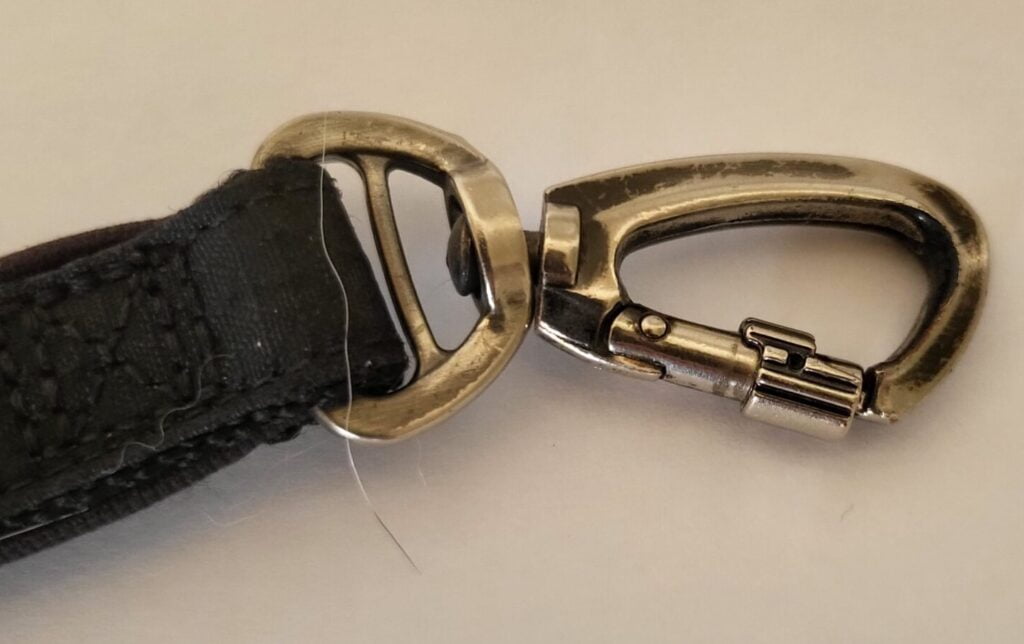
Carabiner with locking device
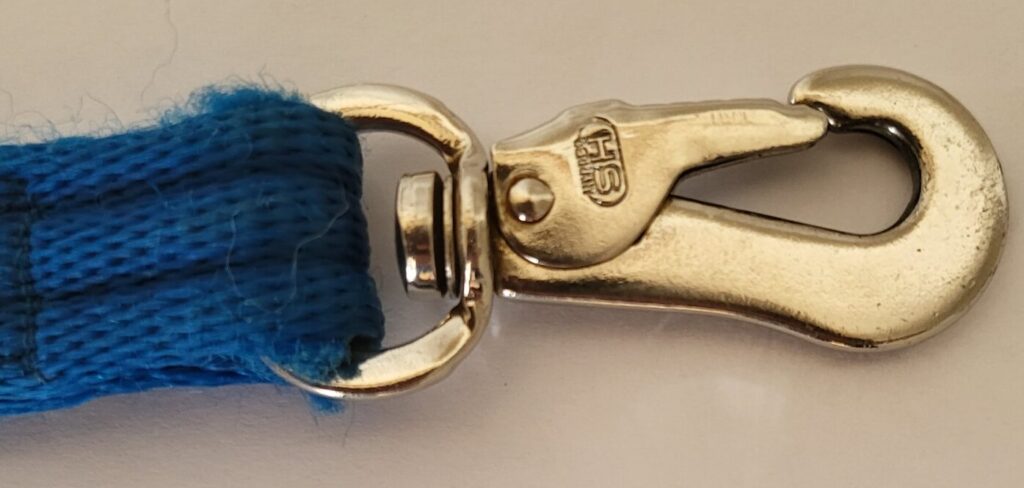
BGB Carabiner
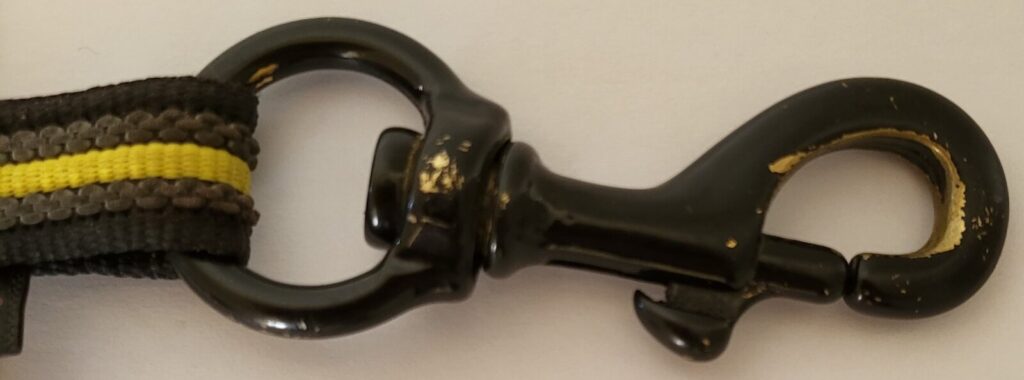
Bolt Carabiner
Retractable Leash
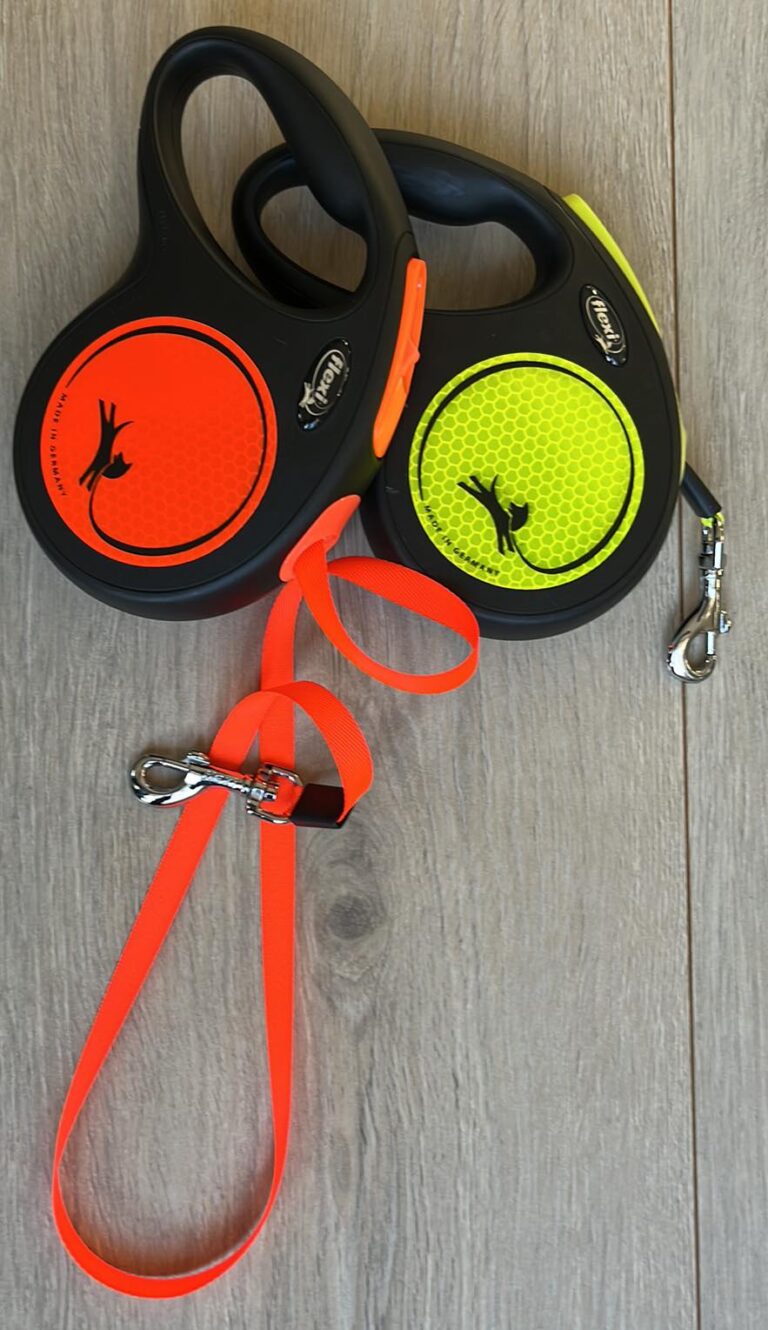
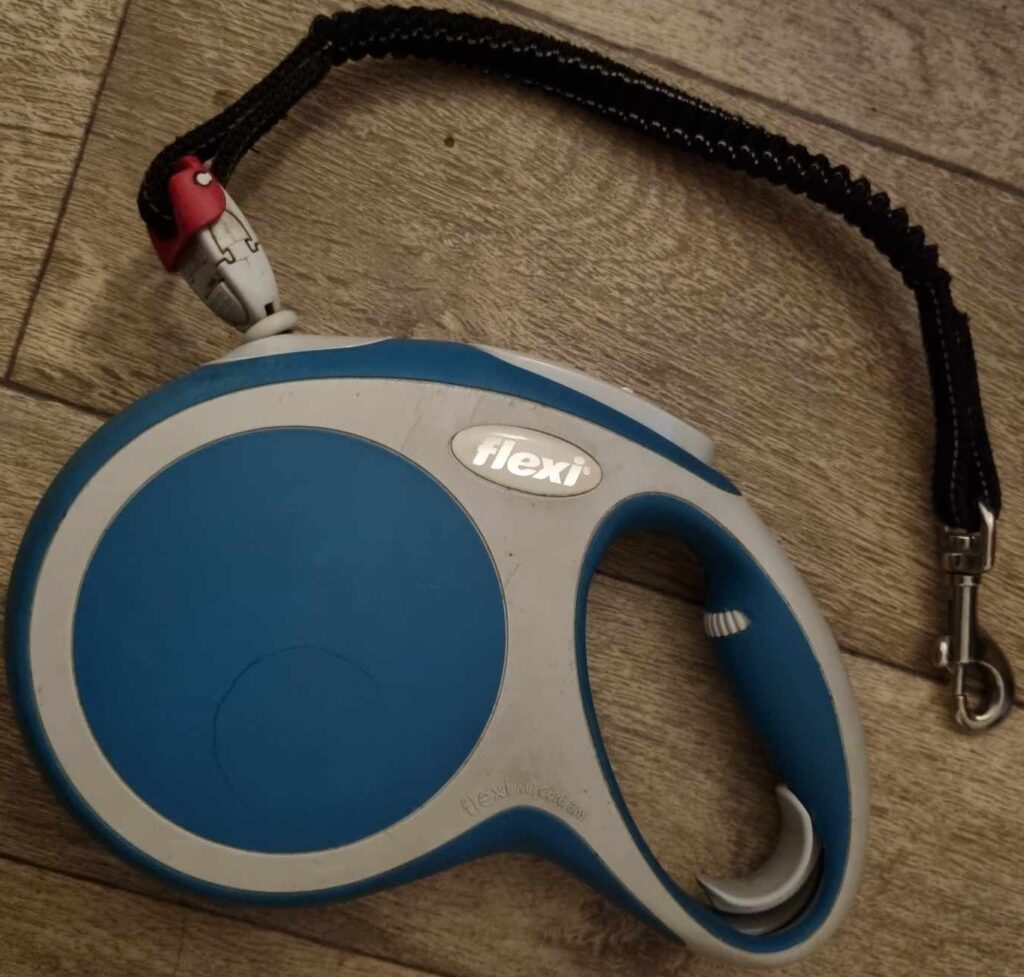
Most Retractable leashes are made of hard plastic, 2m to 10m long, and have either a strap or a rope leash made of synthetic fibers. The Retractable leash has a coil spring in the handle housing that automatically winds or unwinds the strap or rope. The line unwinding can be stopped with a brake button, and a desired length can be maintained over time with the permanent stop.
Pros:
-It can give the dog more freedom.
Cons:
-Unwieldy, which means it can often fall down. The loud bang of the retractable leash can frighten the dog and develop a fear of the leash or of going for a walk, or it can flee out of fear and get into a dangerous situation.
-You feel that you have little to no contact with the dog.
-High risk of injury for the dog, the owner, and people in the area.
Long Leash
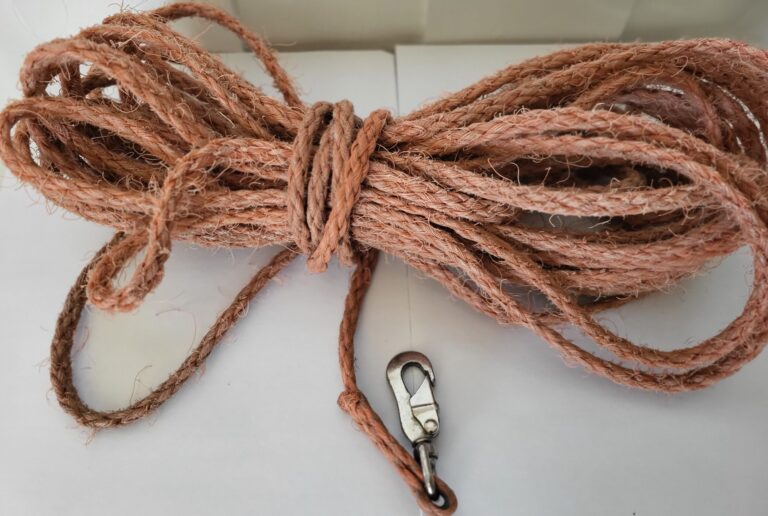
The longline is available in 5m, 10m, 15, and 20m, and they are usually made of webbing, Bio Thane, leather, or rope.
Pros:
-It gives the dog more freedom when he cannot be off-leash.
-Good training tool for recall training.
-There is a wide variety of longlines suitable for all dog breeds.
-The dog is well secured with a longline with a harness, and you still have control over the leash.
Cons:
-It can be challenging to handle the leash due to its length.
-A longline should never be attached to a collar, as the risk of injury to the neck and spine in the event of a recoil can be very high.
-Depending on the material, the leash can also cause burns, and it can become very dirty.
From trying it out myself and from customers and colleagues, I always recommend buying a 3 m or more leash. I even have two different lengths, one with 3 m and one with 4.5 m, and depending on where I go for a walk with my dog, I choose the one that fits best (in the city or in places where it's crowdy, the 3 m is enough, do I have more space I take the 4.5m). It is always good to have a long line at home, especially for the puppy, so he has enough space to explore but is still secured. Here, too, I have two different lengths, one 15m and one 20m, depending on what I need. Unfortunately, I have seen too many negative situations and injuries caused by the retractable leash, and I cannot recommend it without a clear conscience. It's not the fault of the retractable leash because, after all, it's the person who should control it, but unfortunately, the necessary knowledge of how to best do this is often missing. But some people know how to use them and should use a retractable leash.
Post 6- 04.10.2023
Collars and Harnesses
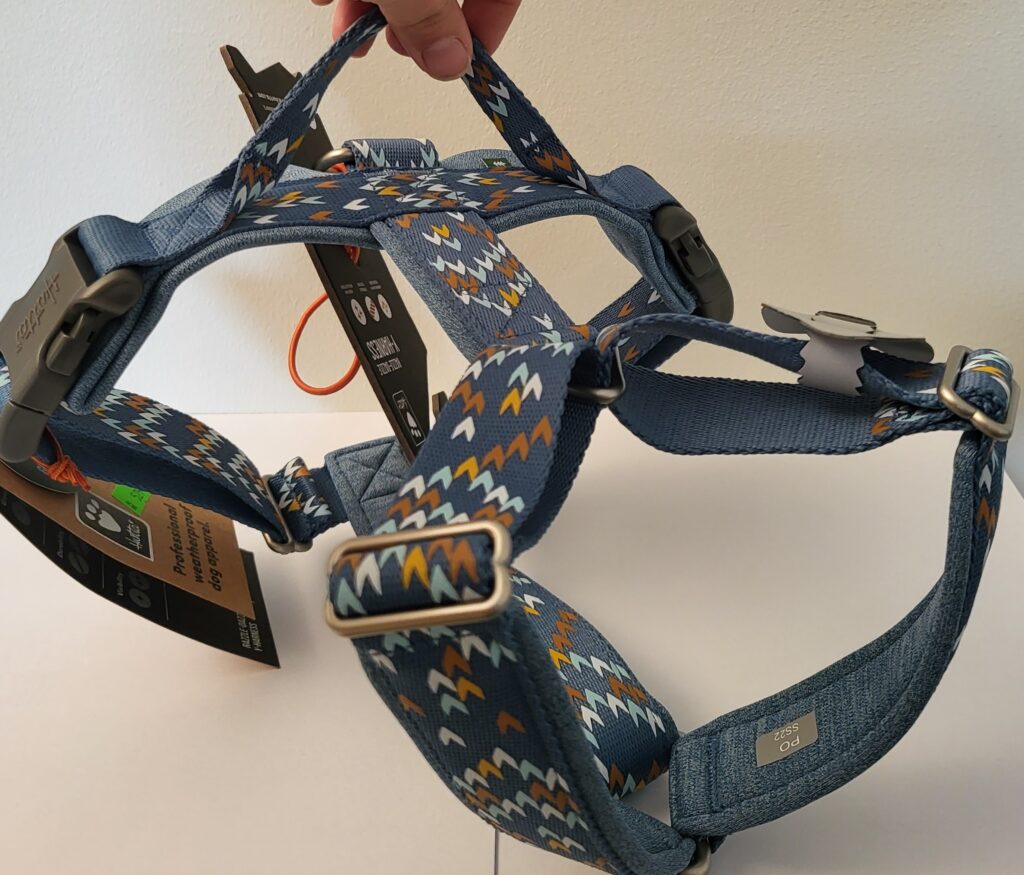
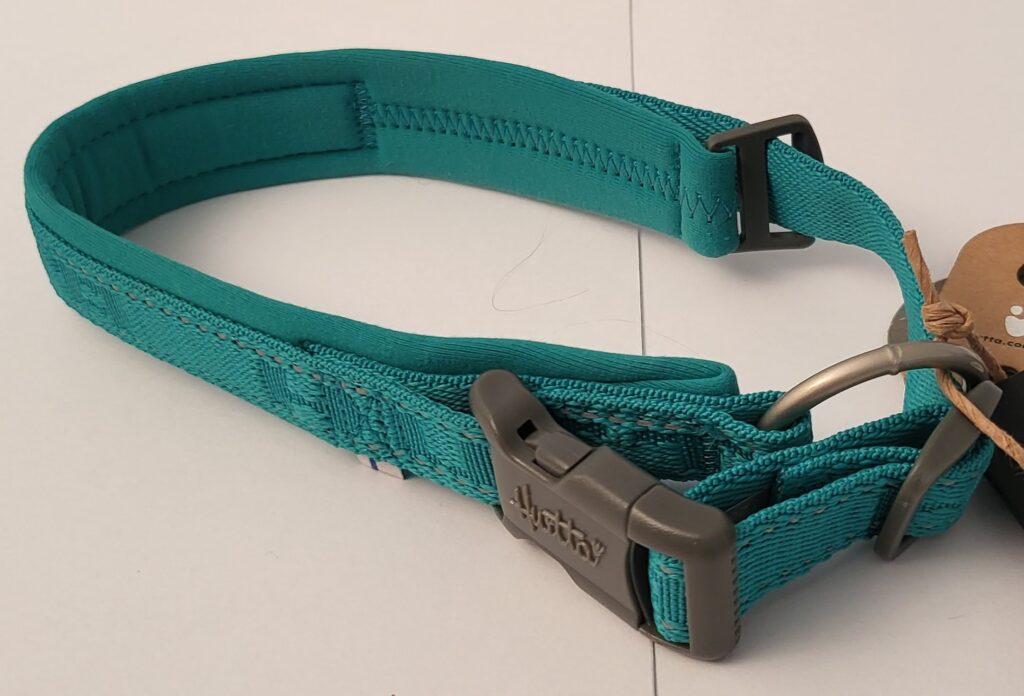
Today, I'm starting a small series on accessories for dogs. Over the next few weeks, I will take the time to introduce you to the essential things we need for our dogs in everyday life and also discuss the advantages and disadvantages of certain products. It starts with collars and harnesses. Yes, it is a hot topic for many, and I admit I have already had one or two discussions about it. But this post is more about introducing different types and analyzing the advantages and disadvantages of collars and harnesses. At the end, I will express my opinion about it and post valuable links to justify my opinion. I hope you enjoy reading here. Let's go.
Collars



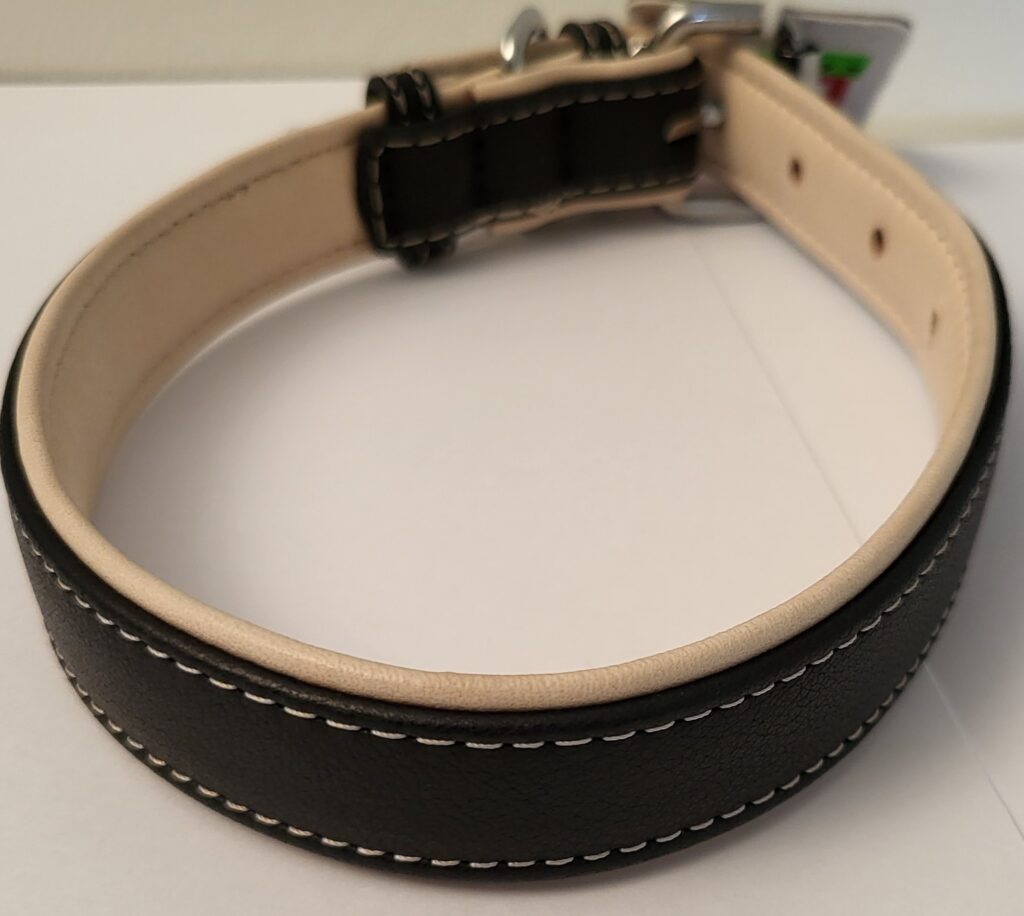
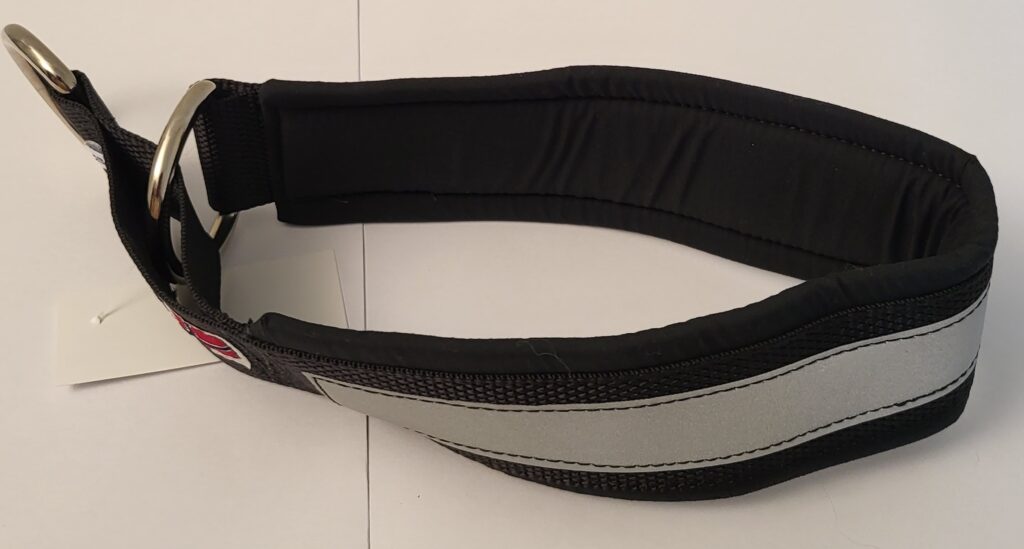
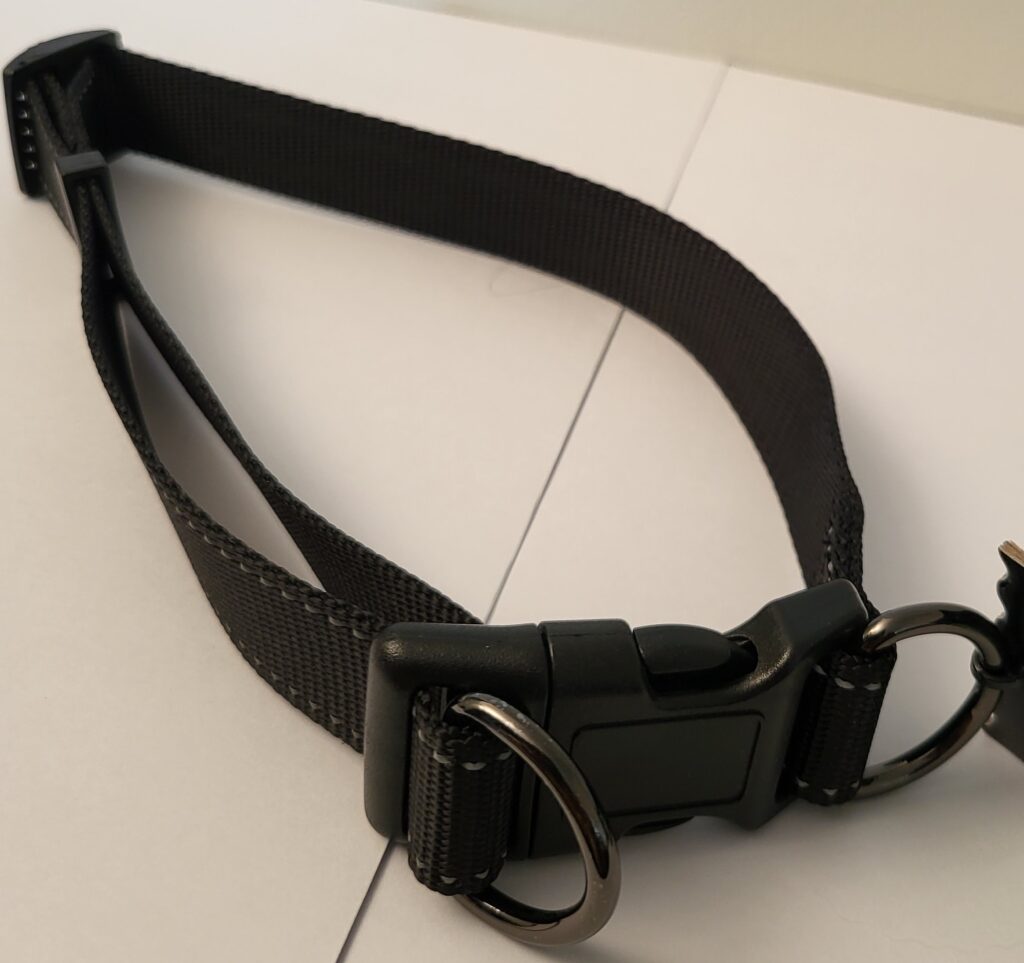
I will only mention the most commonly used and permitted collars. Most collars are
made of leather, nylon, or Bio Thane and can often be purchased with or without padding. You can choose between click fasteners, buckle fasteners, or collars that can only be slipped over the dog's head (so-called retriever collars). Almost all collars are adjustable (except retriever collars) and are particularly popular with puppy owners because you don't have to change them so often.
Pros:
-The collar is easier and quicker to put on
-It is often cheaper than harnesses of similar quality
-Collars are available in many different designs and colors.
Cons:
-Collars can put much pressure on the neck and spine when the dog or you pull on the leash. This causes injuries and tension.
-The dog can free itself more easily.
-There is a risk of incorrect connection if the leash is jerked or pulled unconsciously.
Harnesses

Y- shape Harness with full adjustable
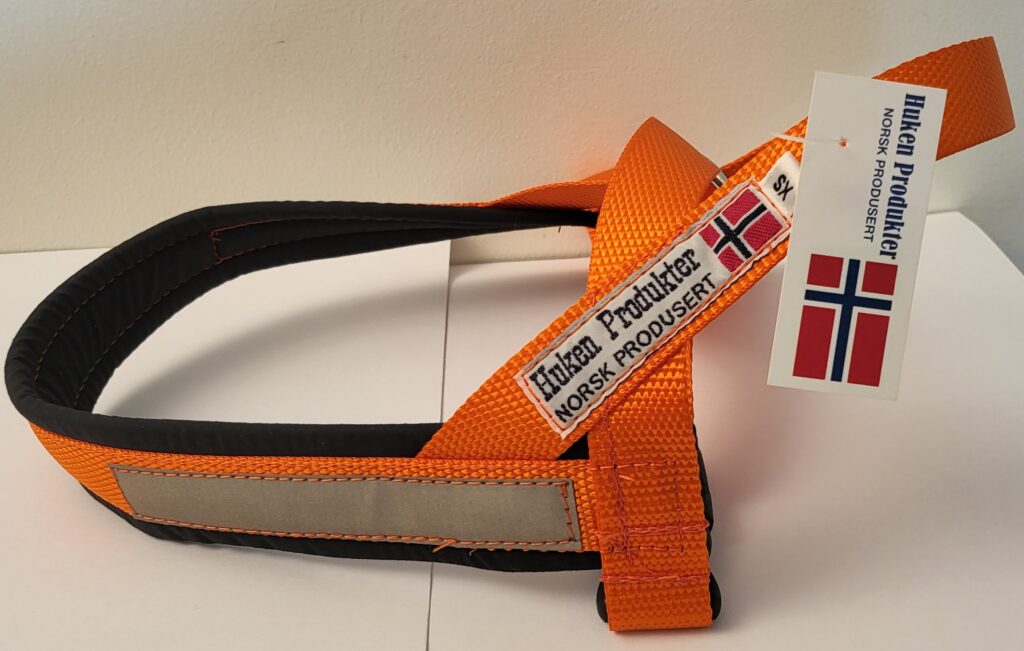
Norwegian Harness

Step In Harness
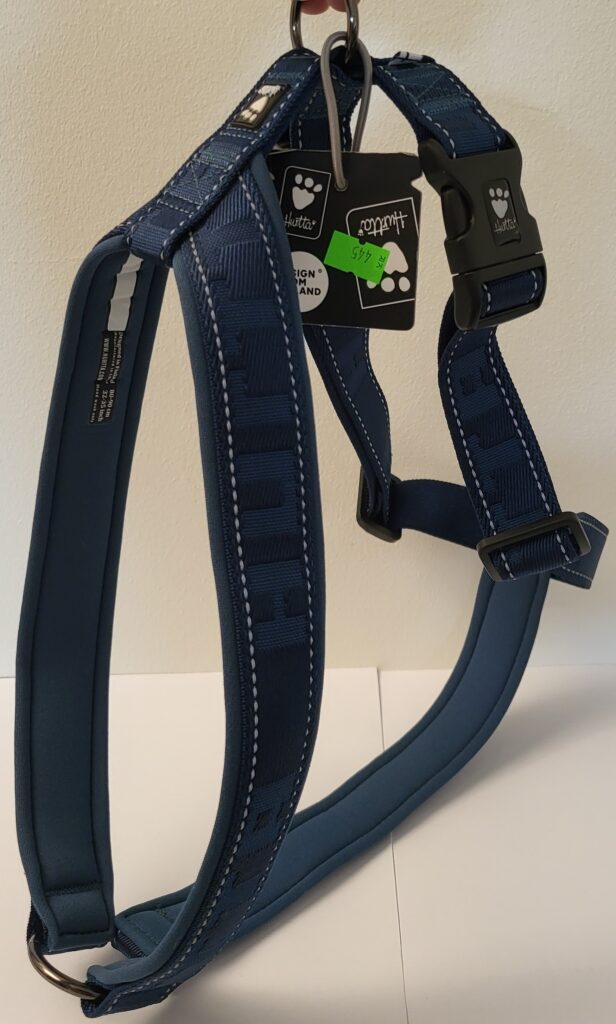
Y-shape Harness with partially adjustable
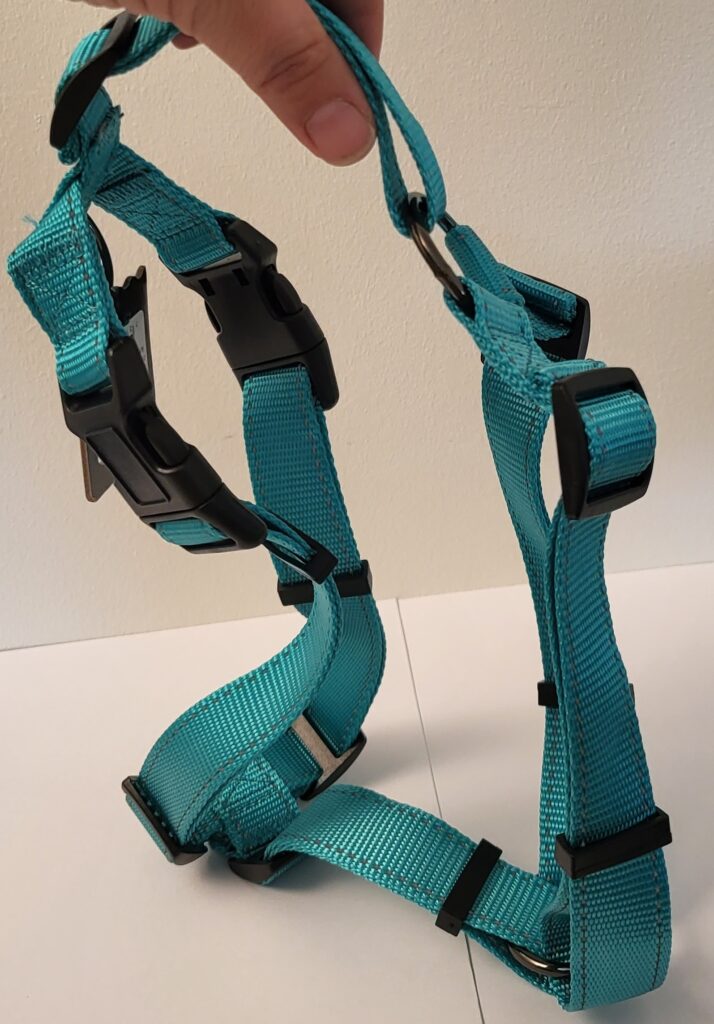
H-shape Harness

Harness fur pulling dog sports
I will only list the most common harnesses here, but there are several for different tasks and situations. The most common types of harnesses include H-shape, Y-shape, and X-shape harnesses, as well as Norwegian harnesses and step-in harnesses. Then, there are different harnesses for different activities such as jogging, mantrailing, or pulling dog sports. Most harnesses are made of nylon, leather, a combination of nylon and leather, or Bio Thane. They are available with or without padding, and most have a click closure (very few have a buckle closure). Some are adjustable in all places, others only partially (e.g., only around the body and not around the head). It is also important to remember that not all harnesses are suitable for all dogs, so it is essential to take your time looking for the correct harness.
Pros:
-There is better distribution of the pulling pressure across the chest and no pressure on the neck and spine.
-Dogs cannot escape from a harness as quickly, and scared dogs can experience more security in a harness.
-If the dog is without a leash, it is easier to pick up the dog in emergencies without harming it.
Cons:
-If the wrong harness is used and not properly fitted to the dog's body, it can also cause injuries and tension.
-It can be costly, especially if you have a dog with an unusual build, such as a pug or greyhound.
-There can be problems with putting on the harness if the dog is not used to it or if we misuse our body language (it is best to stand next to the dog and kneel next to him).
Conclusion:
You can see that there are positive and negative things about collars and harnesses. I recommend choosing a good harness that fits your dog. The health effects outweigh that, so that I can recommend collars with a clear conscience. Many research reports confirm this; since we all want the best for our dogs, we should offer them the best equipment. If you have a dog that never pulls and you never feel compelled to tug on the leash (which you shouldn't do), a collar can also be considered, but from experience, this is not often the case. But a harness, as mentioned above, also risks the dog's health. It is, therefore, essential to get good advice and take your time when choosing dishes. There are many good, experienced employees in various pet stores who can undoubtedly help you. But often, it is your dog himself who shows you which harness he likes the most.
This is a Link to a Norwegian Side about health issues with the collar
This is a Link to the smiling leash side for equipment where you can find useful information.
Acela Hund og Katt provided the products in the pictures. Thank you
Post 5- 27.09.2023
Ten common mistakes when adopting a puppy

Today, I will list our most common mistakes with our puppies. This is not about admitting someone's guilt or even condemning someone. If I'm honest, I also made a few of these mistakes in the beginning, and why? Because I didn't know any better. This post is intended to help educate and stimulate thought on various topics. This list is not copied from anyone and is entirely based on my experiences or the experiences of my colleagues with whom I communicate, so this list represents my expertise and opinion.
1. The Puppy from the Internet:
Due to the puppy/dog boom in recent years, the demand for dogs has increased rapidly, and breeders and other reputable puppy sellers have had problems satisfying even a fraction of the interested parties. Of course, this has created a market online for people who want to make money by selling puppies. These puppies, either from a puppy factory or dubious private owners, will have physical or psychological behavioral problems. They may be sick (unvaccinated, chronic illnesses, etc.), or damage may be discovered in joints or muscles (HD, osteoarthritis, etc.). These puppies can develop behavioral problems because of what they have experienced. I want to emphasize that only some people who sell their dogs or puppies on the Internet are dubious. You must research well enough, get in touch with these people, and visit them before making a decision.
2. Too young:
In some countries, such as Norway or Germany, puppies are not allowed to be given away before they are eight weeks old, and it would be best if they were even given away between nine and twelve weeks old. Unfortunately, I often hear that some people had their puppies when they were seven or even six weeks old. Puppies develop the strongest bond between six and seven weeks with their environment and the people/animals around them. Taking them out at this point and putting them in a new home would have dire consequences. Such puppies may have more fear and less confidence and can develop behavioral problems as they grow up. Puppies go through one of their ghost phases at eight weeks, which can be a disadvantage if you pick up your puppy at exactly this phase. The fear of things, noises, or people/animals can increase, and the stress level can increase in these puppies. The best thing to do is wait for this phase to pass and pick up the puppies between 9 and 12 weeks.
3. Welcome puppy:
The puppy is finally in the house, the joy is tremendous, and the puppy is so cute that you introduce the puppy to all your friends and family in the first week. The little puppy, who has just been taken away from his family and his safe environment and does not understand the world at the moment, is now being put in frightening situations for the puppy. There is noise, lots of big people above him grabbing at him, and he is being passed from one person to the other. Stress levels rise, anxiety becomes more and more, and this can have an impact on later behavior. The first week when a puppy moves in should be a rest week, with no visitors, traveling, or trips anywhere. Take time to get to know your puppy and for him to get to know you, too. Avoid stress and other things that could scare the puppy. Just enjoy this week together. Afterward, when you notice that your puppy has gotten used to you and it seems that he has settled in, you can invite friends or family, but gradually and not all at once.
4. Walks:
The puppy is here, and now we can go on lovely walks together and explore the world. You definitely should, but not yet. We have to be patient here too. This little puppy is in the process of developing and building muscles and joints, which can only happen if we don't put too much strain on it. If we activate our puppy too early, he will have physical problems sooner or later. Therefore, taking your time and not overstraining the puppy is essential. For the first month, the puppy should only be outside doing business and exploring the garden or green space at his own pace and not for long. From 3 months onwards, you can walk for 10 to 15 minutes and then add about 5 minutes for each additional month. This is a basic rule you can use, and of course, every puppy is different, so you can adapt it to your puppy, but please don't exaggerate.
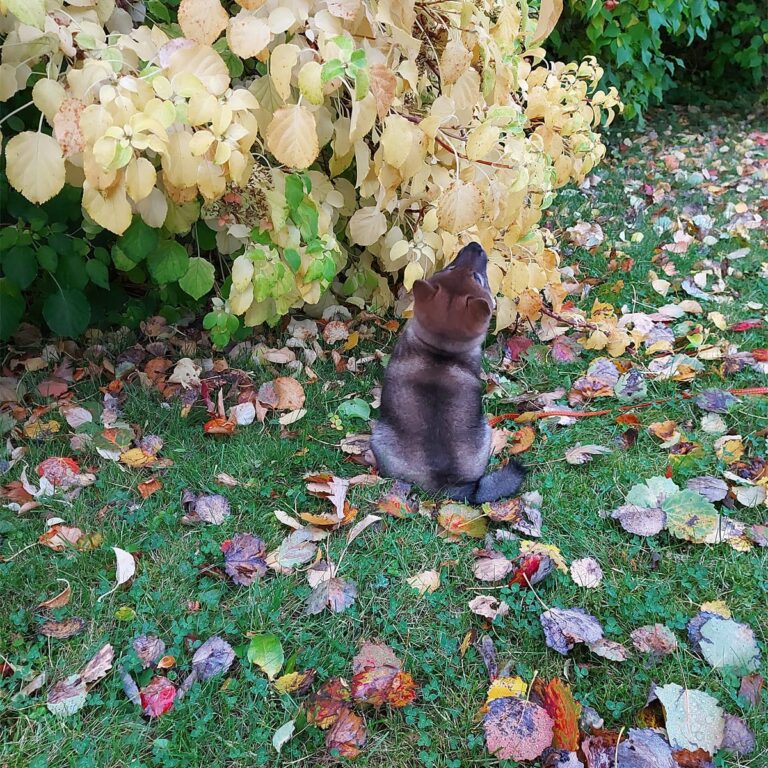
5. We are going too fast:
I see this every day, and I made that mistake by myself initially, but I learned that this is not a good thing. We often forget that their little legs are much smaller than ours. We take larger steps, and to keep up, the puppy must run or trot. In the long term, this damages the muscles and challenging to change your usual pace, but I also know (as a small person) what it is like to run after others because they have a faster rate than me. It takes practice to slow down and not drag our puppy behind us. If we walk more slowly, we give our puppy the chance to explore the world. He can sniff at his own pace, and if he stops to observe, we should also stop and observe the world together with him. By the way, this also applies if our puppy is a dog. The walk is for the dog, so he should get the opportunity to enjoy it. joints of our puppies - they cannot develop properly due to exertion, and this can result in long-term damage.
6. Too much of everything:
We tend to exhaust our puppy because we think this will prevent the puppy from chewing on furniture or other objects, whining and wanting attention, that the famous 5 minutes are not happening, etc. But this is not the case. This tends to reinforce this behavior. When we play with our puppies, it automatically creates stress. If we do not limit the play, the stress level is getting so high that the puppy becomes overstimulated. The stress has to go somewhere, as a result of situations where the puppy, for example, rides up (on things or people), or he whines and whines because he doesn't know what to do with him, or he starts to nibble on something because the nibbling helps the puppy to calm down. That's why a lot doesn't help much. Have small games/low-intensity play and training sessions. At the beginning, at most 5 minutes, which can already be too much for some.
7. Activities:
I see this very often, too. When the puppy is around 5 to 6 months old and is officially a young dog, many people forget that the puppy/young dog is still under development. You start cycling with him, jogging, skiing, or other activities that require high speed. A puppy/young dog should not be exposed to such activities before the age of 1 year. The muscles and joints cannot process this effort and stress and are not ready yet. Wait until he's fully grown, and if you still want to do that, build it up calmly and slowly, just like we build ourselves and our bodies up when we start a new activity so we don't hurt ourselves.
8. Ignore:
Unfortunately, I hear more and more from customers or other dog people that if their puppy barks or whines, they ignore him because then he stops, and it's not worth it for him to continue doing this. If a puppy barks or whines, there will be a reason, and it should be our job to find out. He could be hungry or has to pee, and if we ignore this, he will beg for food when we eat or pee in our apartment, and then we will scold him for it. That doesn't sound right. Puppies often bark or whine if they cannot assess a situation (or people/animals) because they lack experience. They get scared, are unsure, and don't know how to deal with it, and then we leave them alone, even though that's precisely where he needs us the most. I hope you realize how wrong that sounds in the end. If we're talking about attention here, then you can think about it, but there are other ways to fix this problem other than ignoring it.
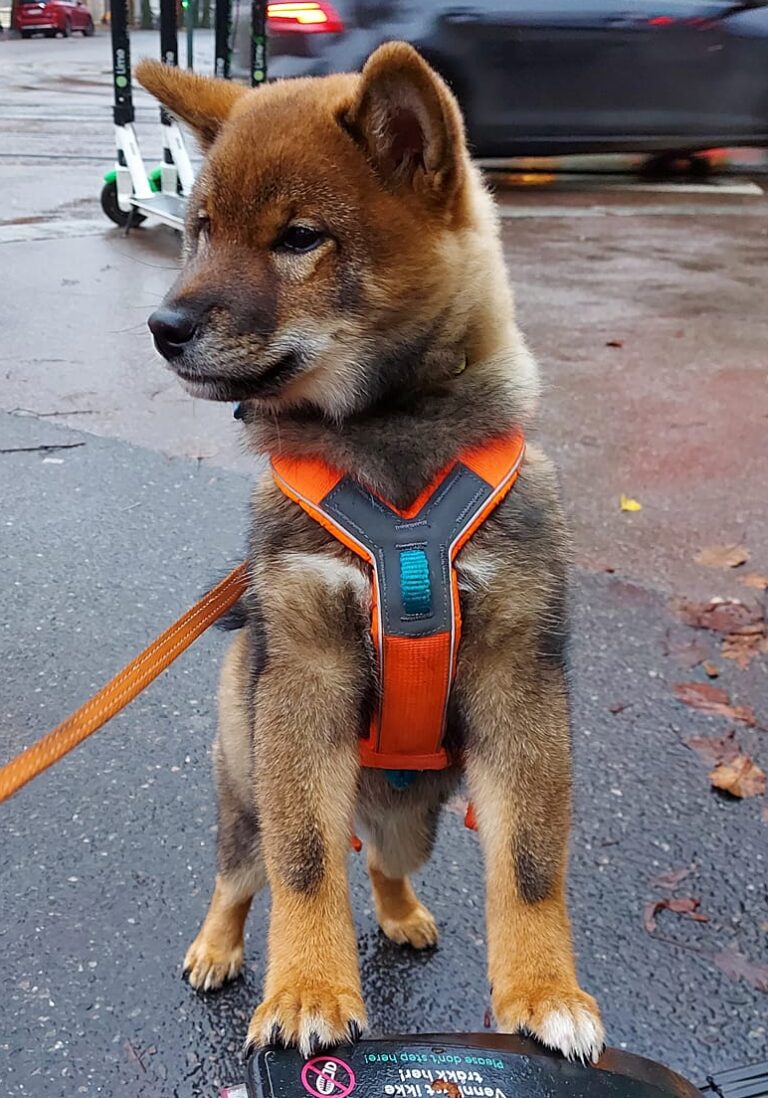
9. No to no:
I feel that we say no too much in everyday life with our puppies and give our puppies too few alternatives. I only use no when my dog's well-being is at stake, and he knows that. If you don't want a behavior from your puppy, saying no, pulling on the leash, or taking something away doesn't help. You have to learn to read your puppy, why he is doing the behavior, and what you can do to change it. If he is chewing on your expensive shoes, knock yourself on the head for leaving them there, take them calmly away, and give him something he can chew on or destroy. He probably has pain in his mouth because of the change of teeth, which is typical for puppies. Understand the Why and redirect it toward your desired behavior instead of saying no.
10. Socialization:
We all know that it is essential to socialize our puppies. The sooner, the better. But not all socialization is good for our puppy. Uncontrolled puppy groups of over three puppies of different sizes and ages can quickly lead to unpleasant situations for our puppy. Puppies must learn to behave around other dogs, and they learn very little from other puppies. Find stable adult dogs and walk together (depending on the puppy's age). The two don't even have to greet each other at the beginning, but the puppy will learn a lot from the dog and his body language. Of course, puppies should also play with puppies, but only two at a time. The difference in size should not be too big, and the session should not be too long, max. 5 minutes. After 5 minutes, the game usually turns, and it becomes a negative experience for one of them.
Post 4-20.09.2023
Enriched environment
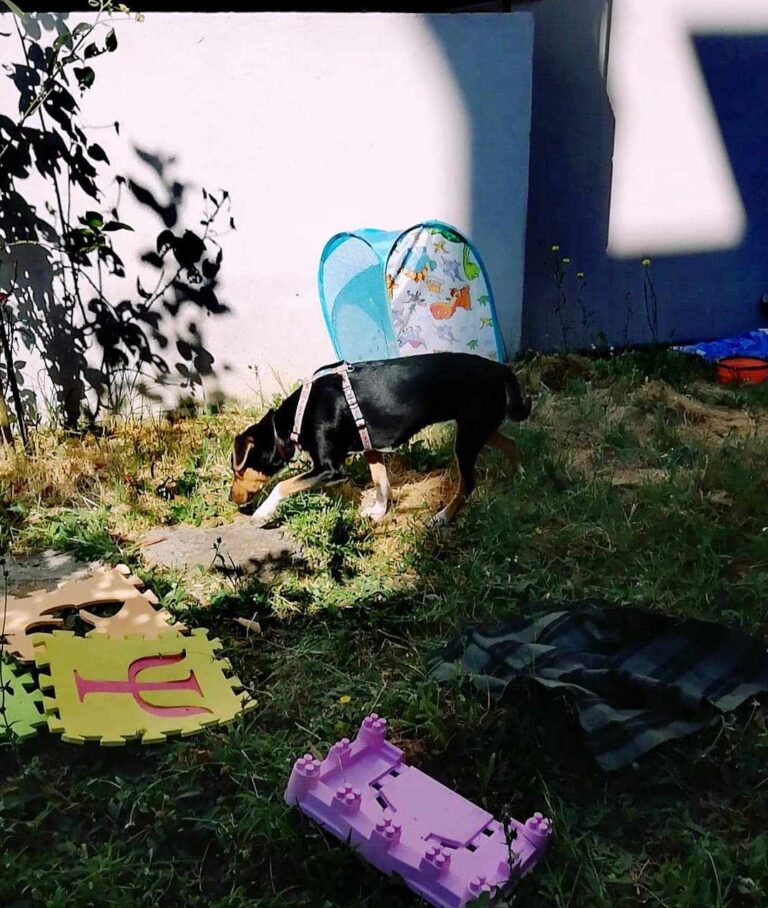
What is an enriched environment?
An enriched environment means adding something new to the environment, such as new objects, smells, etc. Or an utterly unknown environment can be part of an enriched environment. This is also a perfect activity for your dog, where you can watch how he moves and uses his language.
Why should we use an enriched environment?
By exploring enriched environments, our dogs increase their curiosity and senses. Because our dogs explore new things independently and decide where they want to go and what they want to explore, they get many good experiences of success, strengthen their self-confidence, and become more confident in new situations. This activity is perfect for dogs that are anxious and insecure. An enriched environment is a fantastic mental activity suitable for all dog breeds and all ages.
How and where can we create enriched environments?
You can do it outside and inside, as long as the environment is safe for your dog (fenced or long-leashed on the dog without her holding the leash). You don't need much space for it either, as it's not the amount of items that matters, but rather that you offer it to your dog in the first place. But suppose you think that doesn't fit into your apartment. You can also use a lawn outside or visit new places with your dog with new smells and impressions. In that case, this is also part of an enriched environment. Your objects should not be sharp and entirely safe for your dogs. You also have to be okay with the things being used, being able to be nibbled on or peed on by your dogs.
Always use new items, so it's a good idea to leave some things out at the beginning and save some for the next time.
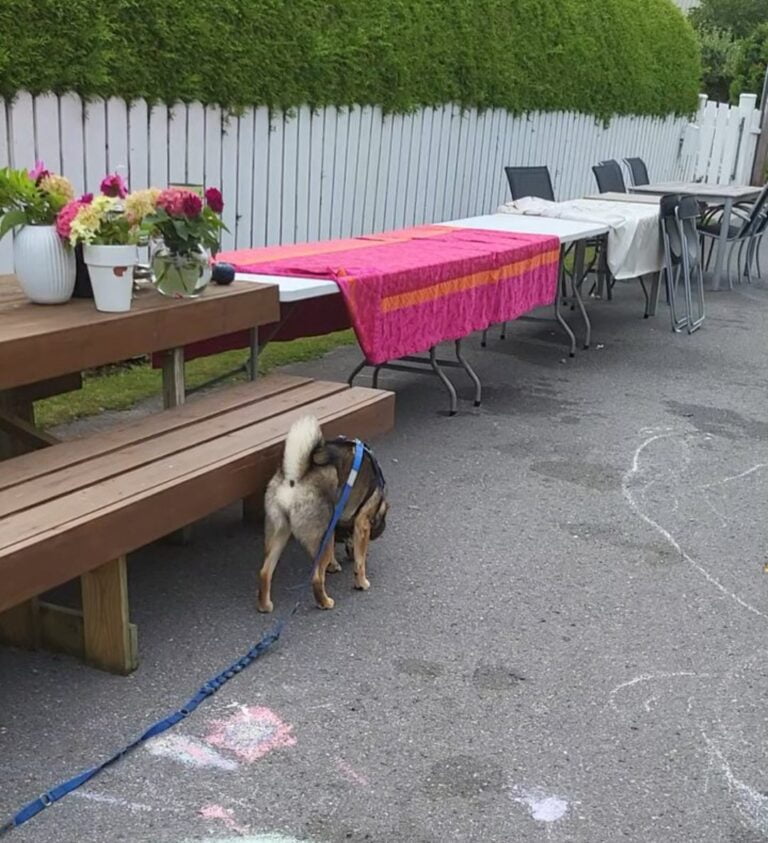
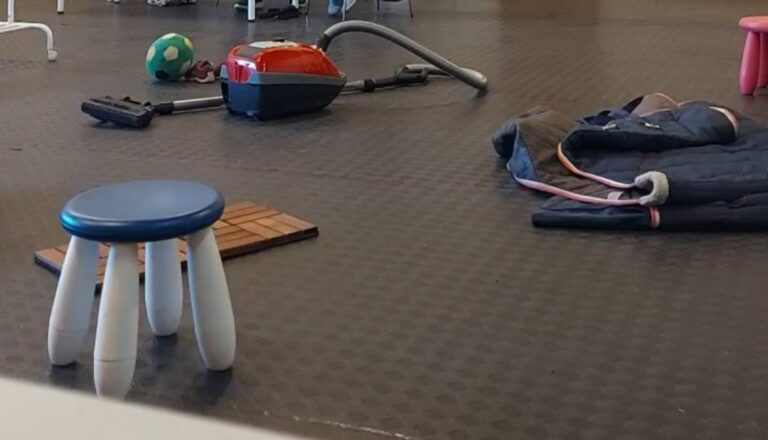
Here are a few examples of what you can use:
- Blankets (they can also have smells from other animals)
- Bags and old suitcases
- Old car tires
- Garden tools (that are not dangerous for the dogs)
- Used children's toys
- Umbrella
- Things that make noises or that you can hang
somewhere so that they move a little
(e.g., plastic bottles empty or filled with rice
or peas that make noises)
- Things where the dog has to go over or under
- Old used shoes, gloves, or clothing
Here, you can let your imagination run wild as long as it isn't dangerous for the dog, and he shouldn't be frightened by it, either.
What do we have to keep in mind?
While your dog is exploring, do not use treats, commands, or talk to your dog. Just let him explore on his own. During this time, you can take the time to observe your dog and perhaps also write down what you see in his movements (does he seem tense or perhaps in pain, etc.), in his behavior (scared or is he just exploring one thing, etc.) and you can learn to read your dogs' body language better. Your dog should either explore without a leash or with a long leash but without you holding it, and, very importantly, the dog decides when he is finished exploring, not you. That's why you have to plan more time for it, not 10 minutes before you go to work. The most important thing is that it is positive for the dog; he should not be frightened by these objects, and we should not spread stress.
I hope you and your dogs have fun exploring an enriched environment.

I added a link to a page to learn more about enriched environments.
Post 3-12.09.2023
Book Review: How to build a puppy
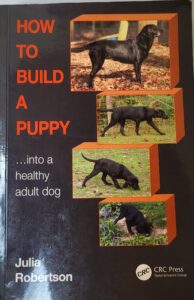
Author: Julia Robertson published in 2022
So many of our dogs are suffering, and because of how dogs express
themselves, they are basically suffering in silence. Dogs do not
appear to demonstrate discomfort or pain in a way that can
be easily translated by us humans, so often our dogs are
physically struggling, and we can inadvertently misconstrue
what is actually happening within their bodies. Often, instead
of demonstrating physical discomforts, they will have behavioral
changes that frequently cannot easily be sttributed to a physical
issue, especially if it is chronic, or ongoing.
-Site IX Why was this book written?-
About the Author:
Julia Robertson is from England and founded the Galen Therapy Center in 2002. Since then, she has improved the dog`s quality of life and health. Julia was one of the first in the UK to recognize the link between physical pain and behavioral changes and to develop treatments for pain. Since 2019, she has also opened an international
school to train others in different countries. The first was in Oslo, Norway.

Who is this book for?
I recommend this book to all dog trainers and anyone wanting to get a puppy or already has one at home. This book is listed on the list I give my clients who participate in my puppy classes. On this list are all books I recommend to read as a puppy owner. But those with an adult dog can also learn a lot from this book, so this book is for everyone who works with or has a dog. We all have something in common: the well-being of dogs. Through this book, we learn to read dogs better and understand how everything we do with the dog is related to physical stress and the resulting damage.
When we bring our new puppy home, it is one of the most exciting
and worrying days: and I am talking about how we feel, and
not how your puppy feels!
You are bringing a wonderful young puppy into your home.
But not just your home, but also into your environment,
your timetable, your routine, your expectations, and your
lifestyle, completely into your life.
Whereas your puppy has just been taken from their family,
their comfort, their security, and their guardian, and have
been placed, often on their own into a completely new
environment, new smells, new everything, and that was not their choice.
Consider how traumatic that would be if you were put in the same
situation. The opportunity of establishing a positive and sustainable
relationship wil have greater success if we try to get into the head
of the puppy and ponder their needs and perceptions.
-Site XXIV- Introduction-Ethology and functional anatomy-Puppys Arrival-
What is this book about?
In this book, Julia explains to us how the muscles and joints of our puppies and dogs are structured and how the right and wrong activities influence the development of the muscles and joints. The anatomical names are also mentioned here, which might be difficult for some people to remember initially, but this will improve over time. At the end of the book, you can make an impression on you friends with the technical names :).
You also get an excellent impression of the different activities, and it is explained very well which are good, which should only be done now and then, and which absolutely should not be done. It is also well illustrated with many pictures so you can understand and comprehend everything better. This book also has a puppy plan that is very well explained and easy to carry out. I use some elements from this plan in my puppy courses. It is also essential to ensure that readers understand the importance of enriched environments and how they can create this
at home.
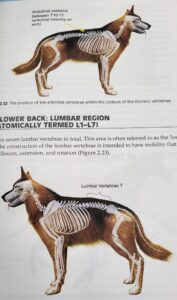
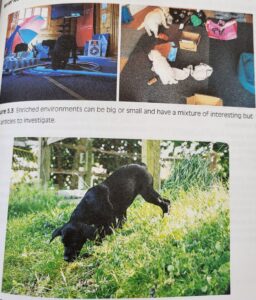
Conclusion:
This book should be on the shelf of anyone who has anything to do with dogs. The understanding and knowledge you get are worth much more than the book costs in the store. The only bitter aftertaste you might get is realizing
that you have done something wrong with your dog or the dogs before it. Yes, that can happen, and I felt it myself while reading it. But the most important thing is that we learn from it and do it better, and with this knowledge, we can help others so that they don`t make the same mistakes as us. At the moment, this book is only available in English. Below the text, you will find two links to order this book: one international link and one for Norway.
Post 2-05.09.2023
Yellow can help you and your dog
For dog owners, walks are a nice change from everyday work; you can move and think about other things. But for many, these walks are also exhausting or even torture. Not knowing and not listening when the owner says they both need space and don't want to greet others pushes many dogs and their owners into situations that could have been avoided. The dog might not have pulled on the leash, barked, bared its teeth, growled, or been labeled aggressive. He is not aggressive; he is sensitive to external stimuli and only reacts when we give him no choice.
But we can do something to protect such dogs and to improve the walks for such a human-dog team.
Yellow is the answer.
What is the yellow ribbon?
The yellow bow or bandana is attached to the dog, collar/harness/leash. It signals that the dog is sensitive and that you need more space and do not want to come into contact with people or dogs.
What can be the reason for using it?
There are many reasons a dog owner can have to signal to others that the dog needs more space.
Here are some examples:
° The dog is training or being trained.
° The dog is sick.
° The dog has an injury that makes it unsafe, or
the pain can change its behavior somewhat.
° Has had bad experiences with other dogs
or people.
° The bitch is in heat.
° The dog can be anxious in contact with people
or dogs.
There are many other reasons for using the yellow ribbon; the important thing is that we respect it and keep our distance.
How can we help ourselves and others?
The problem with the yellow ribbon is that far too few people (at least here in Norway) know about it. As a result, many who use the yellow ribbon experience that people still want to give little space or make contact. We have to
do educational work here and tell people we know about the yellow ribbon, whether they have a dog or not. The more people we reach, the more we can facilitate the walks of many dogs and their owners using the yellow ribbon.
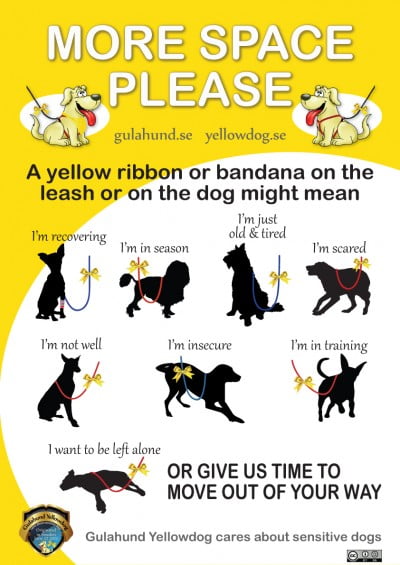
In 2012, the Gulahund-Yellow Dog Project was founded in Sweden. The clarification and further communication of the meaning is essential to these people. Here is the website:
Here, you can also print out flyers and posters to hang them up somewhere.
This will help us reach more people and explain the meaning of the yellow ribbon. I occasionally use a yellow ribbon for my dog to give him the space he needs. We must think of everyone, not just us, who don`t have problems with their dog because, who knows, our next dog could need this ribbon, and it would be nice if everyone knew what it stands for.
Post 1-30.08.2023
The Road from dog owner to dog trainer
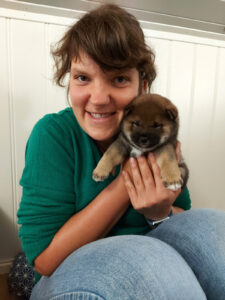
Hi, My name is Juliane.
I'm 37, live in Oslo, and am a dog trainer and behavior specialist. But I haven't always been that; I'm a teacher in a kindergarten, and before that, I was a bartender and waiter.
The idea of becoming a dog trainer has more or less been in my head for most of my life. When I was young, that's what I wanted to be, but this time, life won't be like that. I listened more to people who said that this is not something you
can live on, you have to find a proper job. Then I moved from Germany to Norway, and then it wasn't the best time either to start to be a dog trainer, especially when you first have to learn the language.
03.10.2020, my husband and I got a puppy in our house after a long period without a dog. Finally, there he was my little puppy. The joy has been great. But when a dog, whether adult or puppy, comes into your home, you feel more
responsibility and maybe more pressure. At least, that's what I felt.
Pressure for not being good enough for the little puppy, or for doing something wrong that will affect the dog for the rest of its life, but also the pressure from others who always know better and will give you advice because they have had dog`s
in all years.
And in this very chaotic and sensitive period, I heard that little voice again. Wasn't it you who wanted to be a dog trainer sometime?
If not now, when?
Three years later, with a dog who is perfect as he is (with a Shiba in the house, expectations are not so high 😉) and education as a dog trainer and behavior specialist, I have now found my way which I want to go, it was not easy, and it will certainly not be easy at first. Still, I dare, and I hope that you, too, if you know the little voice inside you, whether it is a dog trainer or something else, that you too dare.
In that blog I will write more about; books about dogs/training/behavior/,research results that are good to know about, and everything about dogs that is fun to pass on to you.
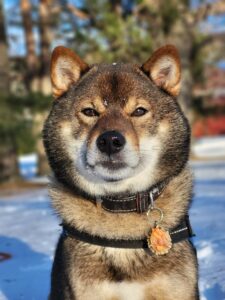
 Neste Miljø- & sosialiseringskurs starter 10. oktober.
Neste Miljø- & sosialiseringskurs starter 10. oktober. Viktig: Innføring i nesearbeid bør skje rolig og i riktig tempo – gjerne i samarbeid med en erfaren hundetrener. Går man for fort fram, kan hunden bli frustrert eller miste motivasjonen fordi den ikke lykkes. Da kan nesearbeid bli noe negativt i stedet. Med en god plan, tålmodighet og trygg veiledning kan nesearbeid være et verdifullt verktøy for atferdsendring.
Viktig: Innføring i nesearbeid bør skje rolig og i riktig tempo – gjerne i samarbeid med en erfaren hundetrener. Går man for fort fram, kan hunden bli frustrert eller miste motivasjonen fordi den ikke lykkes. Da kan nesearbeid bli noe negativt i stedet. Med en god plan, tålmodighet og trygg veiledning kan nesearbeid være et verdifullt verktøy for atferdsendring. En hund har ca. 100–300 millioner luktreseptorer – vi mennesker har bare ca. 5 millioner.
En hund har ca. 100–300 millioner luktreseptorer – vi mennesker har bare ca. 5 millioner.